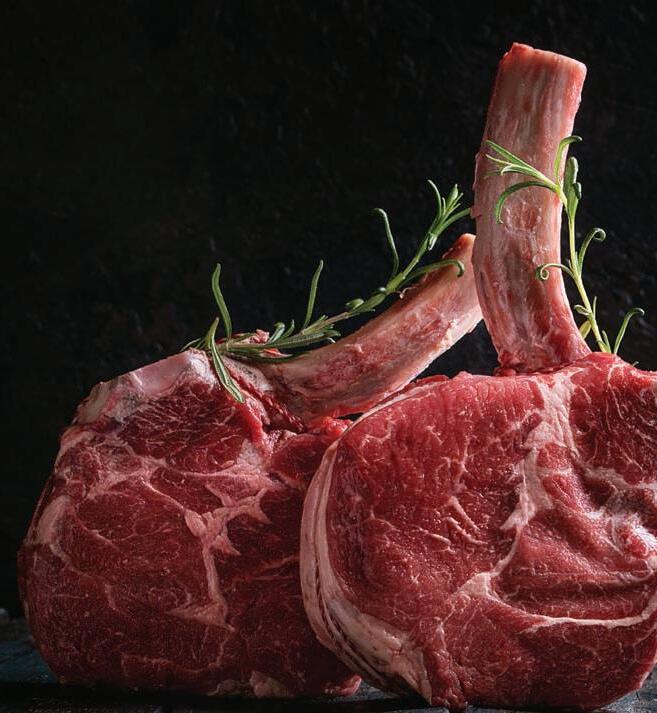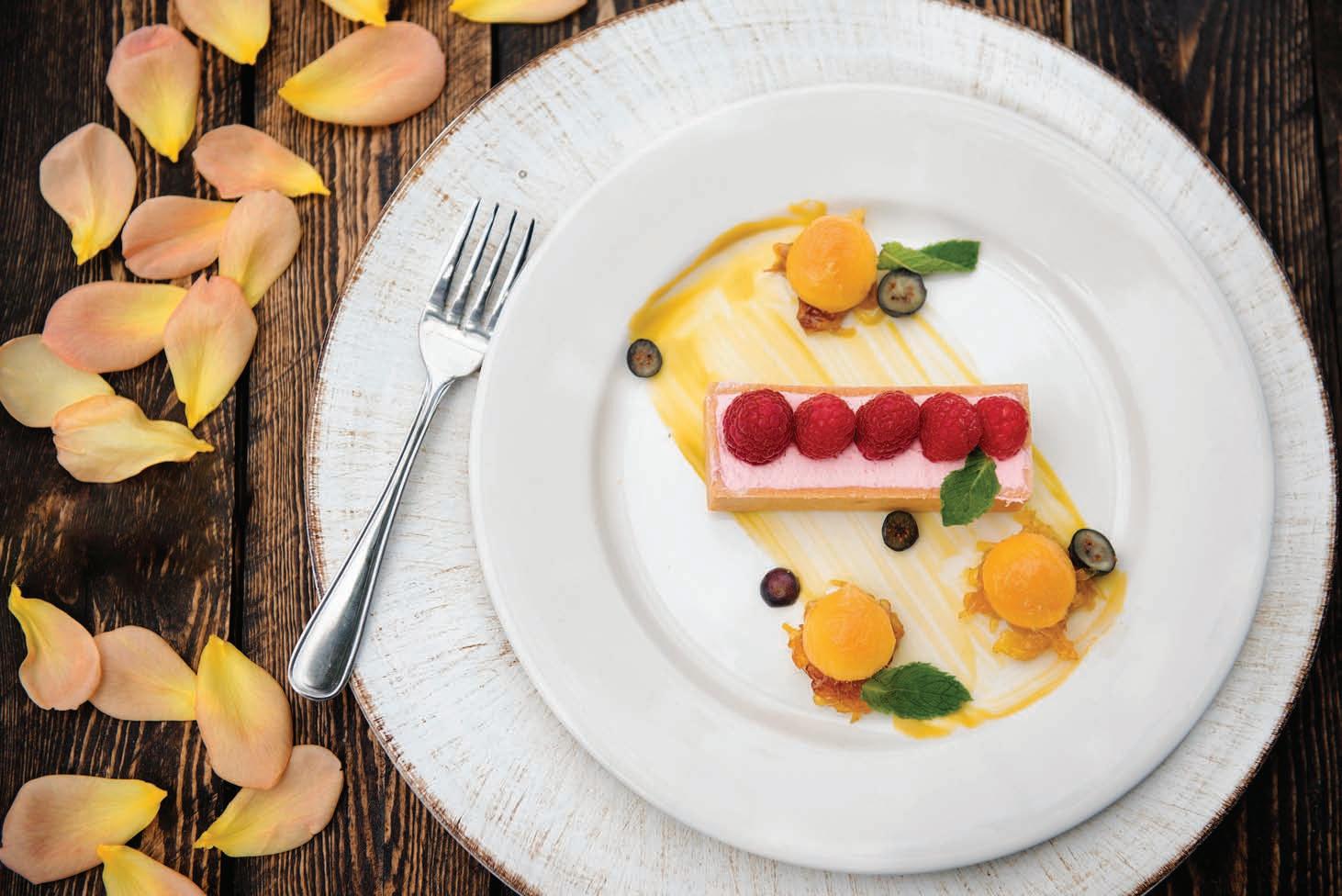THE WORLD ON YOUR FORK

















The Village Restaurant has opened a new location in Chinatown, at 1609 Store Street next to Swann’s. Open daily from 8am to 3pm. thevillagerestaurant ca
Across the street, Café 1891 has opened on the ground floor of the Janion, serving coffee and an assortment of locally made savoury and sweet treats. Its name is a nod to the year the Janion was built.
Also new to the Janion: Cera Korean Restaurant has opened at 490 Pandora St. From the creators of Nubo Japanese Tapas and E:Né Raw Seafood Sake Bar, Cera’s menu and dining experience is based on “han junk sik”, the traditional 18th-century Korean emperor’s feast. nubocera com
The Snowy Village franchise has opened a Victoria location at 2A-4071 Shelbourne St. serving Korean-style street sandwiches and shaved ice desserts. Another Korean dessert chain, the Milkcow Café has a planned March opening at 762 Yates St. Milkcow is a popular chain in Asia, with it s fi rst Canadian location in Richmond. milkcowcafe ca
Spice Valley Indian Cuisine has opened on Esquimalt Road, serving authentic dishes from regions across India. spicevalley ca /index html
Victoria Beer Week is a nine-day festival of events highlighting a broad selection of BC craft breweries while educating Greater Victoria residents about craft beer. VBW is fuelled by events that pair BC craft beer and local Victoria artisan food vendors, with a clear focus on showcasing quality BC craft beer and educating beer enthusiasts. Smaller tastings, seminars and micro-events happen at various venues throughout the week.
Mar 1-9 victoriabeerweek com
The eighth annual Culinaire event will be held in the main building of the
Victoria Conference Centre on March 7 this year. This event provides locals with the opportunity to savour signature menu items and inspired dishes from an abundant selection of restaurants, lounges, pubs, cafes, specialty purveyors, and sip from an excellent selection of local and regional wine, cider, and craft beer. Partial proceeds provide scholarship awards to the Camosun College Culinary Arts Program and a donation is made each year to the BC Hospitality Foundation. culinairevictoria .com
Camosun College is partnering with the Songhees Nation in presenting an evening of Food Sovereignty and Cooking for Reconciliation . This event will be a celebration of Indigenous food and learning how food connects people to culture, heritage and nature. The evening will feature Jared Williams, the island’s indigenous food advocate, working with elders of the community to reclaim food sovereignty. The event will take place at the Songhees Wellness Center, 1100 Admirals Rd. Victoria, BC, at 6pm on March 29. This gala event is a partnership between the Songhees Nation, Camosun College’s Hospitality Management, Anthropology and Culinary Arts programs. All proceeds will go to a scholarship fund for the Songhees Nation. Tickets are $85 per person and available on Eventbrite. www eventbrite ca /e/songhees- nation- food -sovereignty- reconciliation- dinner-tickets- 55227289309
On April 4, Souper Bowls of Hope will be holding its 21st fundraising event at the Victoria Conference Center. The concept is EAT SOUP / HAVE FUN / KEEP THE BOWL. Soups will be created and served by Chef Morgan Wilson of the Empress Hotel , Chef Nicolas Hipperson of the Union Club, Chef Marcelo Najarro of 10 Acres Bistro and Chef Cheryl Schultz of Cheryl’s Gourmet Pantry accompanied by Portofi no Bakery bread. Music provided by the legendary
Vic High R&B band. Guests get to take home a beautifully handcrafted bowl donated by local pottery artists. All funds go to support the Victoria Youth Empowerment Society.
Up island, McLean’s Specialty Foods in Nanaimo is celebrating their 27th anniversary on April 6 . McLean’s Specialty Foods offers a unique, always-changing selection of fresh and imported delicacies and specialty food products as well as over 150 varieties of cheese from around the world. Congratulations McLean’s!
Enjoy an Easter Brunch bu ffet at the Oak Bay Beach Hotel on April 21 . Four seatings are available at 10 am, 10:30 am, 12:00 pm and 12:30 pm. Each child attending will receive a special treat during brunch. Pre-paid reservations are essential as space is limited. $65 per adult (12+) and $32 per child (4-11) For reservations, call 1.800.668.7758
ReWined is a fundraising event for Make-A-Wish BC & Yukon featuring the Naramata Bench Wineries Association (NBWA). Guests will have the opportunity to sample an exclusive spring release portfolio from select wineries while enjoying local fare, live entertainment and a silent auction, all while helping change lives for local children living with critical illnesses. April 24 at the Crystal Garden. Tickets $100. makeawishbc ca /rewined -victoria
The Northwest Cider Association, in partnership with local BC Cider producers, are presenting BC Cider Week 2019 from April 26-May 5 . This week-long series of events will take place around the province, and with an opening festival at the start of Cider Week. In our region, Sea Cider will be hosting A Cider Social on April 28 seacider ca
FOUNDER
Gary Hynes
PUBLISHER
Pacific Island Gourmet
CONTRIBUTING EDITOR
Carolyn Bateman
VANCOUVER CONTRIBUTING EDITOR
Julie Pegg
SENIOR WINE WRITER
Larry Arnold
LAYOUT AND DESIGN
C. Annett
PRODUCTION
Amanda Batchelor
REGIONAL REPORTERS
Tofino Ucluelet, Jen Dart
Victoria, Rebecca Baugniet
Cowichan Valley-Up Island, Kirsten Tyler
CONTRIBUTORS
Larry Arnold
Isabelle Bulota
Meve
Cinda Chavich
Jennifer Danter
Jacqueline Downey
Pam Durkin
Deb Garlick
Denise Marchessault
Sherri Martin
Elizabeth Monk
Daniel Murphy
Daisy Orser
Elizabeth Nyland
Adrian Paradis
André Rozon
Adrien Sala
Shelora Sheldan
Johann Vincent
Lillie Louise Major
SENIOR ACCOUNT MANAGER
Susan Worrall
ADVERTISING ACCOUNT MANAGER
Ron Metella
FACEBOOK/EATMAGAZINE
TWITTER/EATMAGAZINE
INSTAGRAM/EATMAG
For advertising and other inquiries:
PHONE
250-384-9042 / 778-350-6962
EMAIL editor@eatmagazine.ca sales@eatmagazine.ca
ONLINE EatMagazine.ca
MAILING ADDRESS
Box 5225, Victoria, BC, V8R 6N4
STOCKISTS
EAT is delivered to over 200 pick-up locations in BC.
PRINTED IN BRITISH COLUMBIA
EAT® is a registered trademark.
No part of this publication may be reproduced, stored in a retrieval system, or transmitted, in any form or by any means, electronic, mechanical, photocopying, recording, or otherwise, without the prior written permission of Pacific Island Gourmet / EAT Magazine.
Est. 1999
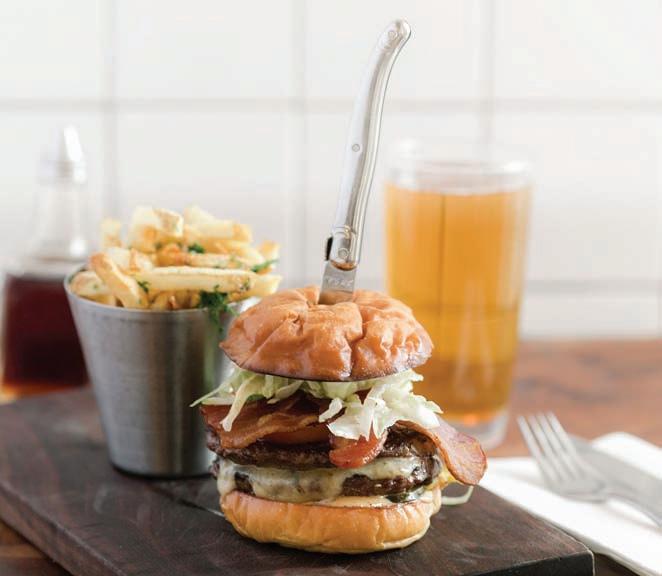
1580 COOK ST., BETWEEN PANDORA AND MASON, 250-588-5400

First off, Taco Justice isn’t Mexican food. Yes, the tacos and burrito shells are, but the fi llings are an unabashed compilation of the chef’s favourite flavours (purists be damned), and that’s just fi ne. There are good reasons why people flock to this food truck.
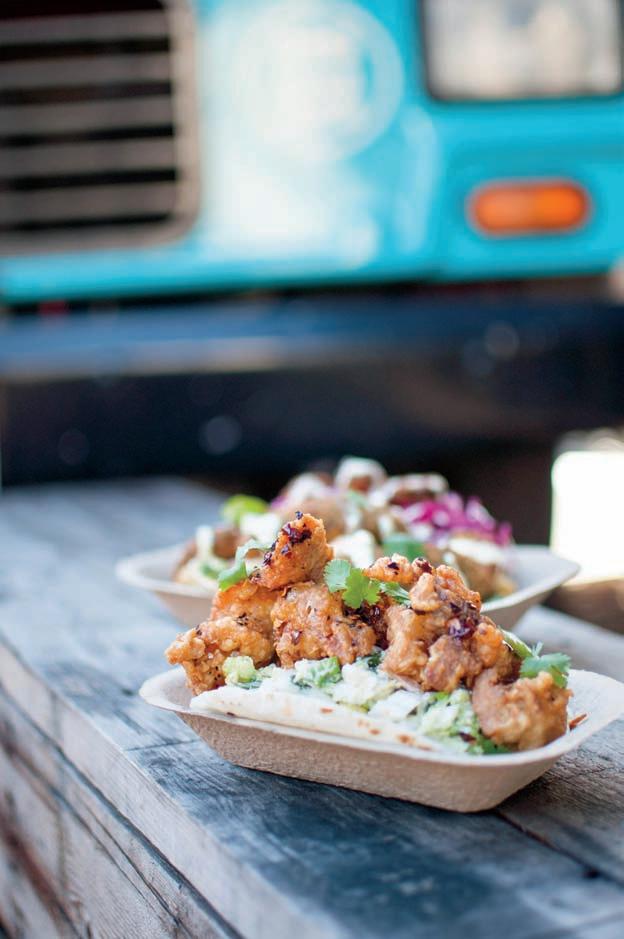
Reason number 1: The Green Bastard, a green burrito fi lled with pieces of deep-fried avocado, and crisped up with panko and corn flakes. In the taco form, the avocado fi lling balances atop a mountain of coleslaw made from Napa cabbage and watercress drizzled with chipotle mayo and their “oh-snap” sauce of garlic mayonnaise and ground snap peas. The Cheddar cheese is conveniently melted right on to the taco shell, but don’t be fooled. You are going to need a fork for this.
Reason number 2: The Belly 2 Belly is owner Temperance Phair’s translation of a Vietnamese banh mi sandwich, the standout element of which is silky, shredded, sweet and salty pork belly. This is very juicy, so you will need to adopt an “elbow high in the air” technique for eating this, or just wear a raincoat.
Reason number 3: The Dirty Bird. This one has Japanese karaage-fried chicken with chilies on top, and grits on the bottom—but grits with Tha i flavourings of coconut and fi sh sauce. Multicultural all the way! If you’re in the mood for comfort rather than creativity, The Brutus has American-style flavours, with ground beef and Mexicanesque spicing. Tacos are $7, and burritos are $15. Seating is on outdoor picnic tables, and the atmosphere is created by the interesting mix of construction workers, seniors and Vic High students enjoying their food. (Taco Justice is re-opening after their winter break the second weekend in March.)
offer local, natural meat that connects farmers who care about animals with people who care about food.
2646 QUADRA ST., NEAR HILLSIDE, 250-381-3363


Are you looking for charm? If you defi ne charm as sweetly matched tables and chairs and silkscreened menus, you won’t fi nd that here in this ramshackle café. But if you defi ne charm as a warm environment where customers chat with each other as if they were in a club, and the owner and customers treat each other like old friends (I actually overheard the owner sending a customer to the butcher shop for him), then you will get that in spades.
With its African and Indian in fluences, Caribbean cuisine is naturally fusion. Owner James’ chicken roti is a revelation. He makes each roti fresh for you, and the Caribbean version goes beyond the simple flour and water Indian one. Yellow split peas are cooked, seasoned with cumin, salt and pepper, ground and made into dough, then rolled thin and fried on a hot grill. You can watch this happening, and it is quite fun seeing the pu ff y bubbles develop. The stu ffi ng can be beef, chicken or vegetable. The chicken is in a mild curry along with potatoes and carrots, the spices well-integrated, showing the dish has been simmered patiently. This is a large and fi lling meal for $10.75.
An interesting word on Caribbean Village’s menu is “callalou,” a term used in the Caribbean for sautéed greens. Those can vary from island to island—amaranth leaves in Jamaica, taro in Grenada—but they are always dark green. James’ version uses spinach and some coconut milk, creating a creamed spinach texture. I had mine as a side with the Spicy Chicken Meal for $10.75, along with rice and beans. This is a very di fferent chicken dish from the roti, as this sauce is made with aromatic spices like ginger, cloves, allspice and cinnamon.
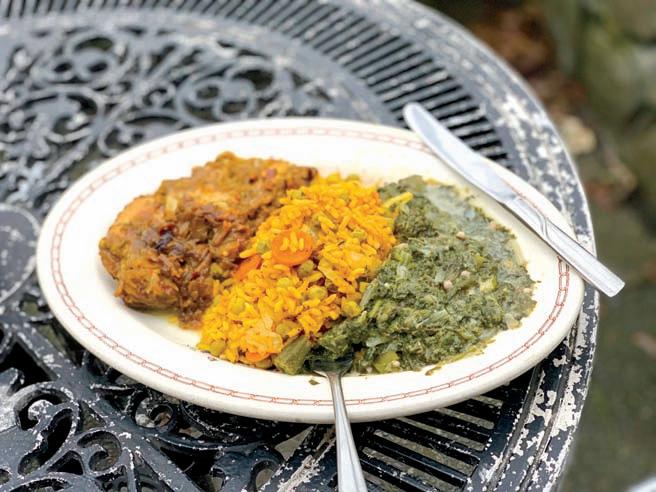
For a quick bite, get a patty like the interesting Salt Fish and Ackee Patty for $4. Ackee is a West African fruit that must be eaten with care since part of the immature fruit is poisonous. But fear not, only canned ackee is used outside the Islands. The salte d fi sh speaks to the days of slavery when this was a cheap food to feed slaves. This salty and sweet combination is inside a fl aky pastry.
One of the best deals in the city is the homemade ginger beer for $2.75. Defi nitely include this in your order for the full Caribbean experience.
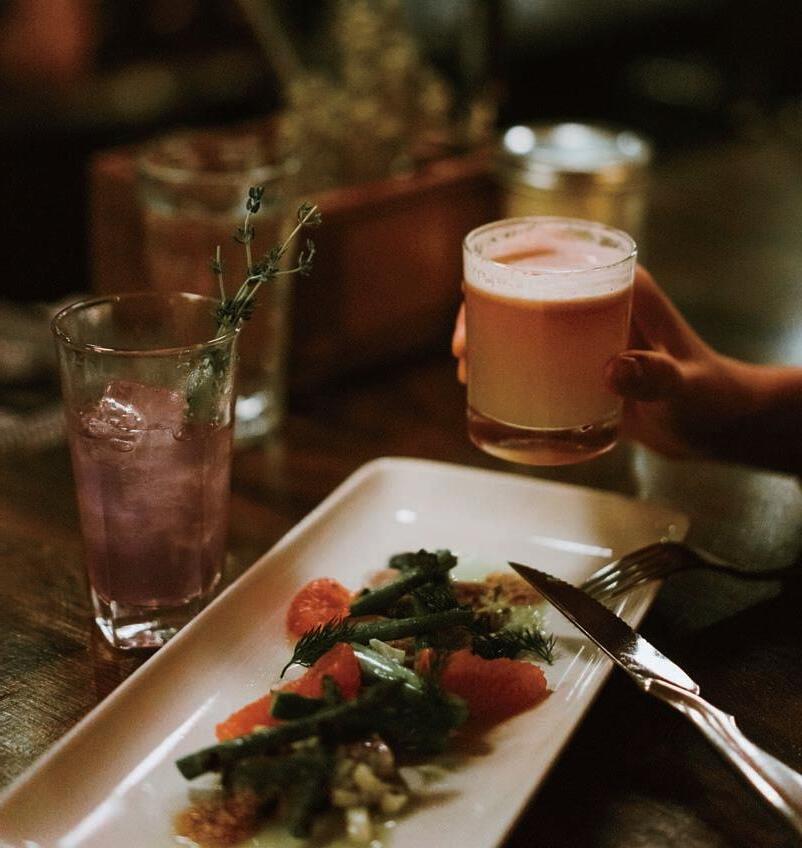
 story
story
There’s a new restaurateur in the Cook Street Village food scene, but you may not know his name—yet. While Jon Derry is not your typical veteran of the restaurant industry, he has started off s trong, opening up The Collective Wine Bar with a business partner, and uncovering a new-found passion for his business and his community.
Derry grew up in rural Alberta, in what he called the middle of nowhere, but for the past nine years he has been working at UVic in the O ffice of Student Life—a mental health crisis and resource centre. While he enjoyed helping students, and the challenging nature of the work, the constant intensity of the job wore him down. “I woke up one day and thought I don’t want to do this anymore,” he says. “I just wasn’t sure what I did want to do with my life.”
Derry had worked in his parents’ restaurant as a youth, and spent some time cooking in his early 20s, but he had not been a part of the industry since. But after seeing the space open up in Cook Street Village, where a previous Serious Coffee had been, he says the universe began to conspire in his favour. “I had the idea that this concept was missing from Cook Street Village,” he says. “For me, it was only about doing this here. I wouldn’t have done this downtown, or any other location in Victoria really.”
While Derry’s friends cautioned him about leaving a pensioned job for a risky industry, he is not one to shy away from a challenge. He quit his position at UVic in February 2018 and took over the space at The Collective in March. Derry’s team went through a major renovation before opening in August—transforming the room from coffee chain to cozy wine bar.
Today, the room is warm and inviting with its abundance of polished wood and exposed rafters. High-top tables, squishy leather couches and intimate booths dot the room, making it feel as though you could just as easily sit down for an intimate meal with wine pairings as you could grab a quick snack and a beer (yes, the bar offers a small selection of local brews along with some cocktails and whiskies).
“I was trying to bring the comfort and community aspect that you might get at the Beagle, but offering a di fferent type of food and approach,” says Derry. “I wanted to do the wine bar concept, partly because I love wine, but also because I wanted to de-stigmatize it a bit and make it more accessible for people.” Derry says he wants to erase a lot of the pretension and hesitation around wine. O ffering small-portion wine fl ights means patrons can sample varieties they may not have tried before in a side-by-side comparison. Even if you don’t know what you like, the knowledgeable sta ff a re sure to be able to point you in the right direction. The Collective’s food reflects a similar laid-back philosophy, focusing on refi ned comfort food with a mostly French in fluence. Seared scallops with an earthy mushroom risotto and salty pecorino cheese sits casually by a classic steak frites or spiced meatballs on the menu.
The kitchen offers a selection of classics with a twist, like the duck wings l’orange—done with the traditional sticky sweet sauce—and vegan and gluten-free options like the vegan board with cashew cheese and wild mushroom pâté. Derry says including dietary options was important to him as gluten-free and vegan diets are no longer a trend but just the way things operate. “Our customers get so excited when we have options that are thoughtfully prepared and were always meant to be vegan,” he says. “It’s not just a salad where we took the chicken off .”
In addition to the vegan options (about 50 percent of the menu), the meat options are similarly well-thought-out and quality-focused. The charcuterie boards are sourced from Four Quarters Meats in Sidney and most ingredients they use are island-sourced when possible, says Derry.
by: Adrian Paradis photography by: Sherri Martin“It’s a group of people coming together on all levels.”
—JON DERRY
JON DERRY
Derry played guitar in a series of bands in his youth so he says the name, The Collective, came to him as a great band name years ago. Today, however, the name fits his ideals for the restaurant. “As I thought of the concept of the place, the village and the type of community gathering place I wanted to build, it fit,” he says. “It’s a group of people coming together on all levels. Even from a sta ffi ng perspective, we’re more than just co-workers.”
Even though the place has been open less than a year, Derry is ambitious and already looking to the future. “We’re here for the long haul,” he says, opening up to the idea of other locations in Victoria or across BC. For now, however, they’re making sure not to spread themselves too thin, expecting to begin opening for lunch when they’re fully comfortable with their operations.

While this may be Derry’s fi rst voyage into restaurant, or even business, ownership, he is a clear example of how far passion and hard work can take you. Perhaps the universe conspiring a bit in your favour doesn’t hurt either.
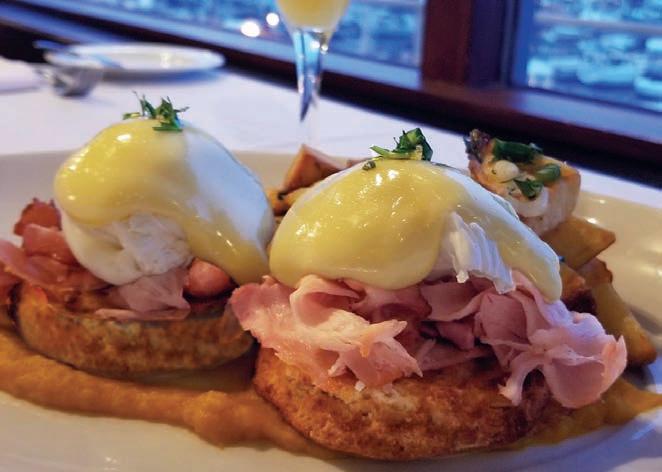

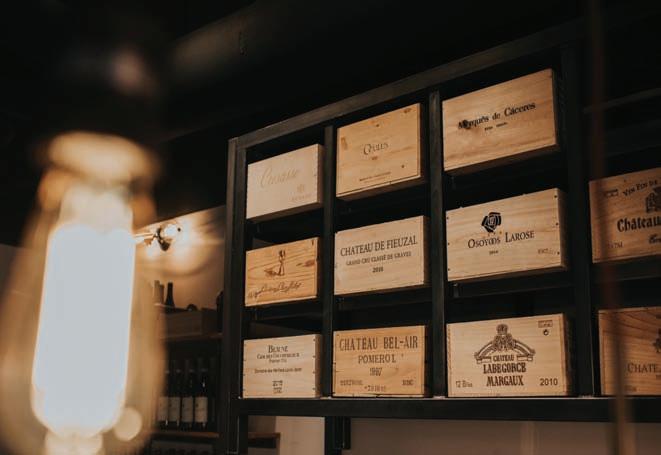
As we strive to be more mindful of both what we put in our bodies and what our food’s journey to our plate has been, we’re naturally led to eating closer to the earth. For me, getting down to earth conjures thoughts of local farms, of slow food and of wholesome, plant-based meals, something that is easy for half the year and can require some creativity for the rest.
We all have some familiarity with BC’s produce-growing seasons and longingly look forward to tomato season, berry season and stone fruit season to name a few. But it’s vital, as we strive to keep it local, that we recognize the ties that bind. There are items that grow in BC year-round that we can always depend on to anchor or highlight our meals, while keeping our food value s on track.

I can’t say the words down to earth without my mouth watering for all things delivering umami—ou r fi fth basic taste after bitter, sour, salty and sweet. Appropriately evolved from the Japanese word for delicious, umami, indicated by a high level of the neurotransmitter glutamate, is that deeply satisfying, savoury, full-bodied taste sensation we associate with meaty, rich and earthy fl avour profi les. Enter the ever-available, grown in BC year-round, versatile and delicious … mushroom.
All mushrooms are a rich source of umami, the earthy element that’s sometimes absent from plant-based meals or longing to be enhanced in animal-based dishes. And lucky for us, our year-round options are broad: from oyster, shiitake and enoki to staples like portobello, white button and crimini (brown button). As well, many of the lovely seasonal mushrooms— like porcini, morel and chanterelle—are readily available dried when not available fresh.
The more umami present in a dish, the more fl avourful it will be. With dried mushrooms containing more umami than fresh ones, and likewise darker-fleshed varieties boasting higher levels than pale ones, we have immense options for adding an umami kick to everything, from omelettes to soups and stews and roasts to toasts. In case you ever wondered why fried mushrooms on toast are so satisfying for something so simple, now you have it. Mushrooms are something we should always have on the grocery list given that they lend themselves to such a spectrum of preparations, are so sustainable and so readily available. A mushroom-enhanced meal will always deliver a heightened level of post-meal satisfaction—that deeply contented feeling when your eye s flutter shut to savour the last bite, appreciating that umami bliss.
TASTE:
Earthy and satisfying, boasting high umami.


TREND:
The foraged mushroom varieties (morel, pine, chanterelle) are shining on restaurant menus and spotlighted in cookbooks these days, but don’t forget the staples of crimini and portobello; we’d be lost without them.
SUSTAINABILITY:
Mushrooms are cultivated year round in BC and are foraged throughout the province in season.
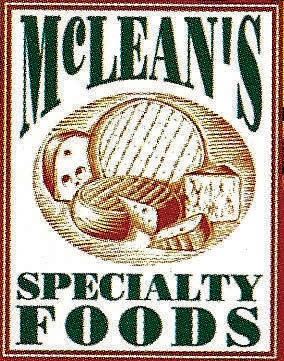
PREPARATION:
Mushrooms can create the subtle undertone for a dish, but I love them front and centre, strutting their stu ff. Slice raw into a salad, pan-fry simply with good butter and fresh herbs and serve on toast, or create a plant-based gravy. The options are limitless.
SELECTION:
Avoid wrinkled or scarred mushroom caps. Look for dry, undamaged gills and stems that ar e firm.


Dining out is a di ff erent beast now then when I was growing up. Then, a trip to the Flamingo Restaurant in Halifax was a huge event, and not just to see the lobsters in the tank. My parents didn’t make us order o ff t he children’s menu (if there ever was one) and so shrimp cocktail, steak and fries, “fancy food” was what we could order. My young self thought our usual fare of salt cod and pork scraps, Finnan Haddie, baked beans, beef stew, and fried baloney paled in comparison to the Flamingo’s o ff erings. Then one night, Mom made chicken curry. This was way outside her cooking comfort zone. Bowls ran down the centre of the table fi lled with chopped peanuts, coconut, raisins, apple pieces, green onion, and banana slices. She dished up the fragrant curry over steamed rice saying she “just wanted to try something di ff erent.”
Nowadays, trying something di ff erent is as easy as hitting the spice aisle, heading to an eatery specialising in a new cuisine, or googling a recipe. Mom would have loved it.
- CYNTHIA ANNETT-HYNESCondiments and spices elevate and enhance, add depth, colour or fi re. Without them, meals would be bland a ffairs. Whether a dash, a sprinkling or a soupçon, they wake up the palate and take a dish from dull to dazzling. Taking cues from the global culinary playbook, here is a list of essential enhancers, a little je ne sais quoi, for mealtime magic.
Berbere
Distinctive and versatile, this Ethiopian spice encompasses chilies, garlic, fenugreek and warm spices such as cinnamon and allspice. Use it to marinate or fl avour meat—think beef or lamb tartare—or sprinkle over fruit.
Black Pepper
With many purveyors of single-origin varietals all over the world, the black peppercorn is fi nally getting its due. Highly aromatic and fruity when freshly ground, it’s no longer stuck with salt as a partner, able to stand alone and proud sprinkled over salad, fruit—such as strawberries—or in chocolate. I recently came across a jar of wild Madagascar peppercorns from Peugeot. These tiny, delicate peppercorns are highly aromatic with a wonderful citrusy, woodsy bite.
Fermentation
Breaking away from the usual sauerkraut and mustards , fi sh sauce and miso, the art of fermenting ingredients has become a no-holdsbarred pastime for many. Fermented ingredients are not only touted for their health benefits but for their ability to add umami and more fl avour to foods from breads to broths.
The fermented Korean red chile condiment with a savoury-sweetspic y fl avour profi le brings to life anything from bibimbap (a traditional rice dish) to mayonnaise.
Gomashio
The dried mixture of herbs, a nod to the Provence region of France, consists of thyme, oregano, rosemary, savory and marjoram with the heady aroma kick from lavender. Add it to stews, a stu ffi ng for a bird or roasted vegetables. Infusing it in olive oil makes for distinctive mayonnaises, vinaigrettes or a fl avour-packed appy of olives bathed in the oil.
Bottled hot sauce is a world unto itself. Here are a few of my favourites: piri-piri, a salty Portuguese version that fi res up any marinade; Valentina, the classic Mexican choice; Tabasco, the spicy, vinegar-forward sauce so essential in a Caesar cocktail or sprinkled on piping hot French fries.
This simple Japanese condiment of toasted sesame seeds and salt is traditionally ground in a suribachi, a grooved ceramic mortar, but a regular mortar and pestle works jus t fi ne. It is wonderful sprinkled over rice, onigiri or steamed vegetables.
This hot pepper paste of North African origin is blended with coriander, caraway, garlic and/or cumin. There are various brands on the market, but the fiercest is Le Phare du Cap Bon, sold in a squeeze tube. You can use the thick , fiery paste direct from the tube or tame the beast by making a sauce with some hot broth and adding it to any soup, couscous-based stews or fi sh.
In my opinion, this is the Western equivalent of the Japanese togarashi. The salt-free blend of 14 dried herbs and spices was invented by Carol Bernick as a solution for waking up home-cooked meals without salt. Shake it on anything from shrimp salad to steamed artichokes and eggs to soups and stews. Honourable mention goes to Spike with its profi le of 39 di fferent herbs, spices and vegetables, and the right amount of salt—great in mashed potatoes.
Spicy, spreadable Calabrian salami can turn up the fl avour dial on everything from eggs to pizza, enrobed on roast potatoes, ripe cheeses or slathered on fresh bread .
The salty, peppery and slightly sweet spice mix sold in the classic blue and yellow tin is great on fries, popcorn, in drawn butter for seafood or i n flour for coating fried chicken.
Smoked ground paprika is an essential ingredient in Spanish cuisine. Traditionally it’s used in paella in tandem with sa ff ron, or as a colouring and fl avouring agent in chorizo. It’s one of my go-to condiments when roasting chicken or grilling pork chops or tofu. It’s available in three styles from mild (dulce) to picante (spicy).
The thick, sweet and sour elixir, a reduction made from the fruit’s juice, can be used as a natural sweetener in iced tea, for a sweet tang in cocktails, salad dressings or dips, or as a glaze for chicken or other proteins, especially lamb.
Preserved Lemons
Salty and deeply citrusy, the chopped rind of preserved lemons hits the spot when added to risotto, couscous, pasta or salad dressings.
Ras el hanout
An earthy aromatic blend of 12 or more ingredients that changes from maker to maker. It plays a similar role in North African cuisine as garam masala does in Indian cuisine. Common ingredients are cardamom, cumin, clove and cinnamon, coriander, chile and peppercorn. I’ve tried a version strong on cinnamon, cumin, turmeric and allspice, while another was strong on fenugreek, chile, ginger and rose petals. Try in marinades and rubs.
Salt
All salt is not created equal. Pink Himalayan, grey, pungent black, Celtic, kosher, re fi ned, sea salt—coarse , fi ne or fl akes—each has its own level of salinity. Its power lift s fl avours out of the doldrums and plays a role in preserving and pickling. In general, its presence adds to the overall balance of a dish, heightening textures and fl avour intensities. Eating would be dull without it.
Shichimi
This quintessential Japanese seasoning—a blend of seven ingredients including hemp seeds, shiso, bansho chile and mandarin orange peel—adds wonderfu l fl avour depth, aroma and heat sprinkled over a bowl of ramen or udon noodles and rice bowls.
Sriracha
This Thai chili, garlic and vinegar sauce is so popular it’s found on Subway and other fastfood menus, in bottled barbecue and stir-fry sauces and fl avoured potato chips. The classic Rooster Sauce produced by Huy Fong Foods in California is one of the most popular brands. Great on its own or mixed with mayonnaise.
Sumac
Made from the dried and powdered fruit of the Middle Eastern sumac bush, the burgundy-red powder adds an addictive tart and citrusy note. Add it to soups, rice or atop salads, or sprinkle lightly over hummus or baba ganoush—spectacular!
Za’atar
An exquisite spice blend of thyme, sour sumac and toasted sesame seeds, common in Lebanon. Mix it with olive oil and use as a dipping sauce for war m fl at breads, tossed with roasted carrots or cauli flower, sprinkled on top of feta cheese, chickpea salads, roast chicken or yogurt with honey.
Zhoug
A coarsely ground and verdant fresh green chile and herb paste hailing from Yemen. It’s an essential component for falafel and shawarma, or for anything requiring a herbaceouschile kick. Fresh green chilies, cilantro, garlic and cumin are the standard ingredients, with variations therein.
Lisa Ahier - Sobo,
fino
“Mexican oregano is my secret weapon. I like its grassy, earthy notes along with the slight hint of citrus. I use it in my smoked salmon chowder and red enchilada sauce, and I’m fond o f fi nishing o ff m y cream soups with citrus, so it’s a natural choice.”
Robert Belcham - Campagnolo and Upstairs at Campagnolo, Monarch Burger, Popina Canteen, Vancouver
“My favourite seasoning spice is a really high quality Karimunda black pepper, a varietal from India. I also use at lot of ancho chili, I love its spicy, raisin-like fl avour, and Old Bay seasoning is always good on fried chicken, fried whit e fi sh or shell fi sh. Other condiments include a lot of Dijon mustard, really good olive oil and fresh lemon juice on just about everything. Diamond Crystal kosher salt has been my go-to cooking salt for almost 20 years, and I love Vancouver Island Salt Company for fi nishing anything.”
Andrea Carlson - Burdock & Co, Vancouver
“My go-to is shio koji. It adds umami to anything. It’s a salt-fermented condiment made from koji rice, also known as “aspergillus oryzae.” It’s relatively neutral and caramelizes beautifully.” At Burdock, Carlson uses it on her dish of koji-caramelized radishes with garlic and kombu.
Paul Moran - 1909 Kitchen at Tofino Resort & Marina
“I love cooking with shiro dashi. It translates from Japanese as “white dashi” and is concentrated and intense. It’s like a very clear, smoky, salted umami bomb and I love using it in lots of di ff erent dishes, speci fi cally good on raw tuna with yuzu.”
Cory Pelan - Whole Beast Artisan Salumeria & co-owner
The Village Butcher, Oak Bay
“Red Boa t fi sh sauce. I never knew wha t fi sh sauce could be until I had this stu ff. It’s minimally processed with only two ingredients (black anchovies and sea salt) and made with true attention to quality. I use it in marinades, vinaigrettes, soups and sauces for a salty, sweet umami kick—it’s pretty much replaced soy sauce in my pantry.”
Brian Skinner - Frankie, We Salute You! Kelowna (April 2019 opening)
“As a vegetarian chef, my go-to ingredient is nutritional yeast—it’s my secret weapon. While plant-based dishes have plenty of freshness, at times they lack depth and umami. I sprinkle it on grilled vegetables, crush it with roasted seeds and salt for a salad topper, or blend it with nuts for a smooth ‘cheesy’ sauce. It can take ordinary vegetables and turn them into something crave-worthy.”
Ricardo Valverde – Ancora False Creek & Ancora Ambleside
“Aji amarillo and aji panca are peppers considered staples in Peruvian cooking. The former is a yellow pepper with a fruit y fl avour and medium heat, and the latter a red pepper with a smok y fl avour. Both add a bright colour and their own unique complexity to a dish. Whether you’re marinating meat, adding fl avour to a stew or rice dish, or creating a ‘leche de tigre’ for a ceviche, they are very versatile ingredients and that’s what makes them fun to cook with. If I ran out of either of these peppers, I would have to shut down both restaurants!”
(Quotes have been edited for brevity.)


My parents, unlike many post-World War II British transplants, were keen to try cuisines that were novel to them. That included Eastern European fare. I inherited their curious and brave taste buds and cottoned on quickly to tangy cottage cheese, buttered noodles, sweet pancakes, paprika-laced sausages, chubby sour pickles and a thick amber stew called Hungarian goulash, which was served without dumplings. (More on those later.)
I have always regarded goulash as a stew. That is until a media trip to Hungary last spring. Our reception evening was spent wining, dining and gliding down the Danube on Budapest’s beautiful Europa Ship. In the stately dining room, a long table nearly buckled under a bu ffet of deer ragout, chicken stew with fairy ring mushrooms, and salads, among which were incredibly good cucumbers napped with goat cheese and fresh dill, and buttery potatoes spiked with vinegar and green onions. But it was the “traditional soup” that for me was the feast’s revelation. The potage was in fact, goulash, but with little resemblance to the floury stew I recall from childhood. Rather it was a fragrant, brick-red broth laden with onions, potatoes and carrots. Tender cooked beef chunks shared equal billing with the vegetables. And the earth-red sweet paprika was the star of the dish.
Goulash is the English derivative of the Hungarian word gulyás, the word for herdsman. Centuries ago Magyar “cowboys,” if you will, drove cattle herds hundreds of miles to market. For sustenance along the arduous route, they would share, from a big iron kettle, beef soup made from onions, fat and the meat from a butchered animal believed to be too weak to make the journey. Until the bright red pepper came to the region many years later, the humble beef soup hadn’t a smidgen of ground paprika. Accounts I read as to the exact arrival of the pepper vary. Most writings agree though that paprika (by which the ground capsicum is known) was underpinning Hungary’s soups and stews by the 19th century.
Goulash’s other relatives are dishes often made with chicken or veal and sour cream: tokány, which hearkens back to the Balkans and which these days relies on marjoram instead of paprika; and porkölt, essentially a reduced goulash and more of a stew. Absolute heresy to tradition is the use of flour or wine in any of these dishes. The lavish use of sweet paprika—none of this teaspoon or “pinch of” stu ff—is essential, and as the spice burns easily, the pot is removed from the heat before tossing it in. Permitted though not always
condoned by traditional cooks are tomatoes or tomato purée and sweet red peppers. So too carrots, turnip or parsnip may be added toward the end of cooking to avoid them turning to mush. Potatoes can be popped in or not if buttered noodles are the side dish.
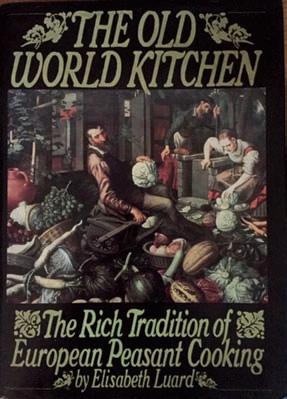



My attempt to recapture traditional gulyásleves (goulash soup) met with modest success. To replicate the kettle, I hauled out my cast iron Dutch oven. Imperfectly shaped carrots, potatoes and turnips, with powdery soil still clinging to them (yes, I washed it off ), bought from the PNE Sunday farmers’ market, lent a sweet earthiness and texture that no supermarket ingredients could match.
From Budapest’s Sempla Kurt Farmers’ Market, I had bought and brought back plenty of fruity, sweet (and smoked) local paprika. I added the crimson powder timidly at fi rst, then chucked it in with near abandon. It worked. Gelatinous bone broth was the way to go for the liquid. Where I tripped up was the beef. The stew meat was far too lean and turned out a bit dry. A lesser cut with more sinew and fat, such as shin or shank, and a far longer simmer, would have mellowed better with the paprika. With a bit more fat and liquid, and a further slow simmer, my brick-red concoction became rich, sweet and earthy—more of a porkölt, but delicious nevertheless.
If meat is not part of your cooking agenda, take heart. Elisabeth Luard’s recipe (Old World Kitchen) for paprika soup with dumplings (bográcsgulyás) works well with roasted mushroom or vegetable stock and wild mushrooms. Gluten-free folk can take it a step further with dumplings made from gluten-fre e flour (or even gluten-free Betty Crocker Bisquick if you must).
So what was that goulash I had back in the 1950s? My memory is vague. Perhaps porkölt and goulash became one in translation. Far more probably it was the North American version in Irma Rombauer’s recipe in Joy of Cooking, which calls for a mere 1⁄2 teaspoon of paprika (maybe the spice was hard to come by?) and ha s a flour-thickened gravy. But authentic or not, that satisfying and unique stew of my childhood is one of those cultural dishes that
Rich and fork-tender lamb shoulder with root veggies makes a perfect meal for transitioning from winter to spring.
RECIPE + STYLING + PHOTOGRAPHY: ISABELLE BULOTA
 Isabelle Bulota’s
Isabelle Bulota’s
Lamb shoulder is a classic cut for the beginning of spring and perfect for Easter celebrations. Shoulder is a tougher and fattier cut of meat, best cooked slow and low until the meat is falling from the bone. (Leg of lamb is a leaner joint, best served pink, as are racks and fillets, which are ideal for feeding smaller parties.) No need to worry about carving neat slices, just pull the lamb away in succulent chunks, add a spoonful of mint sauce or gravy—you might not be able to stop eating!
Lamb and Vegetables
Serves 4.
1.3 kg (2¾ pound) lamb shoulder, bone in Coarse sea salt
Ground black pepper
2 Tbsp oil
1 kg (2 pounds) medley mini potatoes
2 medium onions, unpeeled and cut in half
4 drained anchovy fillets, chopped finely
1 garlic bulb, whole, unpeeled and cut in half horizontally
3 stems of fresh rosemary, leaves picked off and chopped
1 cup chicken stock
1 cup dry white wine
Garnish
Zest from 1/2 lemon
Mint Sauce
1 bunch of fresh mint
1 tsp sugar
1 Tbsp hot water
3 Tbsp wine vinegar
Remove the lamb from the fridge 1 hour before you want to cook it, to let it come up to room temperature.
Preheat oven to 350°F. Rub lamb all over with salt and ground black pepper.
Heat oil in a roasting pan over medium-high heat until browned on all sides. Remove from pan.
Layer potato, onions, garlic bulb and anchovies in roasting pan. Place lamb on top of vegetables; add rosemary. Pour combined stock and water over the vegetables. Cover pan tightly with two layers of foil. Roast for 2½ hours.
Meanwhile, make the mint sauce. Pick and finely chop the mint leaves, then place in a small mixer. Combine sugar and hot water together before adding to the mint. Add a pinch of salt and vinegar, blend till combined.
Remove foil from the roasting pan, reduce oven to 325°F; roast a further 1½ hours or until the meat can be pulled from the bone easily. Transfer lamb to a tray, garnish with lemon zest, cover with foil; rest for 20 mins.
Serve lamb with the vegetables and mint sauce.
Tip: Keep the drippings and make a gravy. Pour drippings from the roasting pan into a clean pan and cook over high heat. Stir in 4 Tbsp of flour and continue cooking, whisking for 3-4 minutes, until just starting to catch. Add 1 cup of red wine and boil rapidly until reduced by half, about 6-8 minutes. Add 2 cups of beef broth, continue to boil and stir until it just starts thickening. Season if needed.

The largest sake collection in Canada, with around 75 kinds of sake in stock at all times, is in Victoria, BC, at E:Ne Raw Food Sake Bar on Pandora. In fact, if you combine E:Ne’s collection with the collection at its sister restaurant, Nubo, the number climbs to 100.
Three certi fied sake sommeliers, trained in Japan, are in rotation, with one always on the floor, to help guide you through the joys and complexities of sake and suggest food pairings.
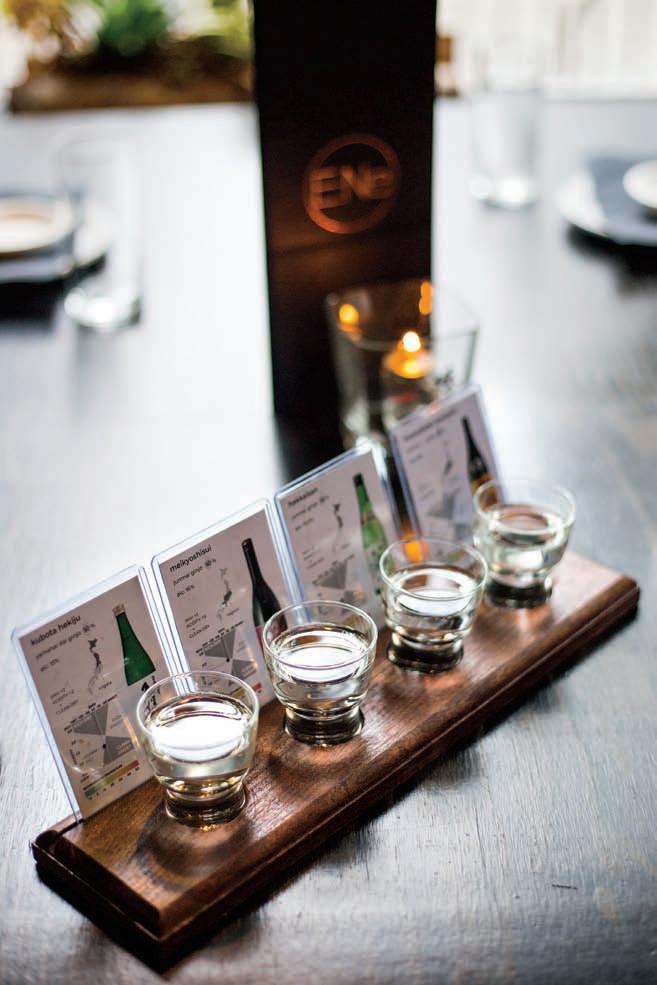

Sake is undergoing a renaissance in Japan. Once considered a drink of the older generation, it is now being marketed to younger people by bottling it in wine bottles and even playing with the form by using a champagne method for making sparkling sake.
There is a reason sake hasn’t been embraced until recently in North America. Lower-end Japanese restaurants have been serving unsuspecting customers what is actually a cooking wine. So, no, sake is not meant to be consumed like a shot; that is a practice that was developed to minimize exposure to the rawness of the bad stu ff . Sake has the breadth and complexity of wine and should be sipped the same way. Cooking sake masquerading as drinking sake also gets warmed up to make it less painful to drink. But you can warm up your more complex one; it depends on its body and the food you are eating it with.
Good quality
like those served
E:Ne and Nubo, have all the breadth and complexity of wine and should be sipped the same way.story by: Elizabeth Monk photography by: Lillie Louise Major FLIGHT OF SAKE AT E:NE
The facts about sake
Here is a primer on sake. In its purest form, it is made of rice, water, koji mold and yeast. The word for this form is “Junmai.” The absence of that word means that distilled alcohol has been added. “Junmai” is a sign of quality, but you do not want to overgeneralize that guideline, as a skillful sake maker can consciously add alcohol to enhance aroma and make the sake drier. You might see a percent on the bottle, such as 60 percent. This does not mean the product has 60 percent alcohol! It means 60 percent of the grain is remaining after 40 percent has been polished away, to get rid of the less desirable fl avour and texture of the rice’s exterior.
Alternatively, some words indicate the percent of grain remaining. “Ginjo” has 60 percent remaining, and “Daiginjo” has 50 percent. On top of that, in Daiginjo sake, the rice has been polished for three days straight. Sake rice has a bigger and longer grain than eating rice, which makes this process seem slightly less miraculous.
A sample fl ight at E:Ne
E:Ne opened last summer to the immediate delight of Victoria’s Japanese food lovers. The restaurant’s elegant interiors make the perfect backdrop for a sample fl ight of sake. Four stubby glasses are offered on a specially designed tray. Elegant cards behind each glass explain features of each pour. As in a wine tasting, the order is important, with the lightest and subtlest one coming fi rst. I started my fl ight with a Tatenokawa Junmai Daiginjo.
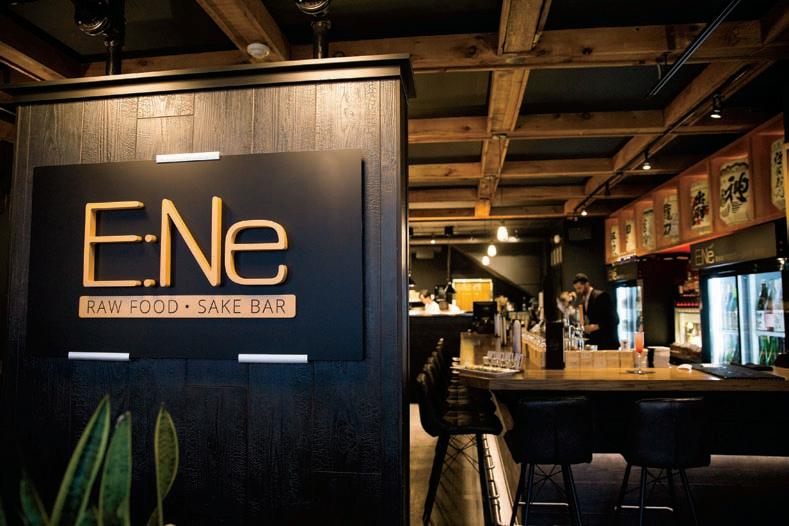
Tatenokawa is the brand name, Junmai indicates that no alcohol was added, and Daiginjo shows it is a refi ned product with half the rice exterior polished away. With its notes of apple, quince and cherry, this aromatic sake works well on its own as an aperitif or with delicat e fi sh. This sake is never heated because of the delicacy of its aroma.
Next came Kubota, a powerhouse company in Japan, and its Senjyu brand. It is drier because it has some added distilled alcohol, creating a very di fferent second tasting in my fl ight. It is crisp with a mineral nose and pairs well with richer raw fi sh that has a bit of umami.
Next, my sake sommelier moved me on to a Brewmaster’s Choice Honjozo (polished down to 65 percent of the rice grain). This sake is popular in Japan and is light on the palate, crisp and refreshing.
Finally, Tengumai Umajun is bright with a lot of body and pairs well with cooked food like pork and duck.
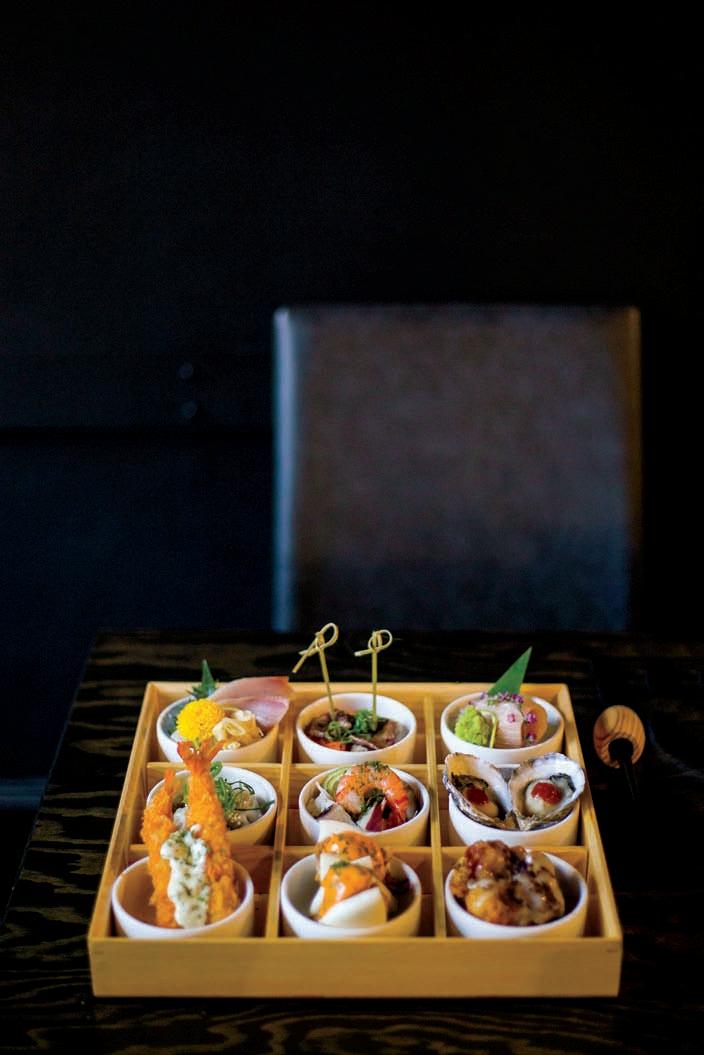
Sake in all its variations is so iconic in Japan that there is actually a special word for foods to eat with it—Otsumami—small, savoury, tapas-sized dishes. A fun way to try a lot of them is to order the Omakase Platter, nine small square white plates pieced together onto a tray. These dishes are chef’s choice.
As an example, the aburi nigiri, which is pressed rice topped with delicately charred salmon, creamy mayonnaise and jalapeño, pairs well with Hikomago Junmai served at 20 degrees Celsius. In the words of my sake sommelier, it has “big bones.” It is well-structured and has matured for three years so is robust enough to stand up to the smokiness and strong avour profi le of the charred salmon.
In contrast, the raw beef dish of Wagyu Tartar, redolent wit h fl avours of sesame, soy and a sweet Korean barbecue sauce, pairs well with the refi ned, aromatic sake called Tatenokawa Junmai.







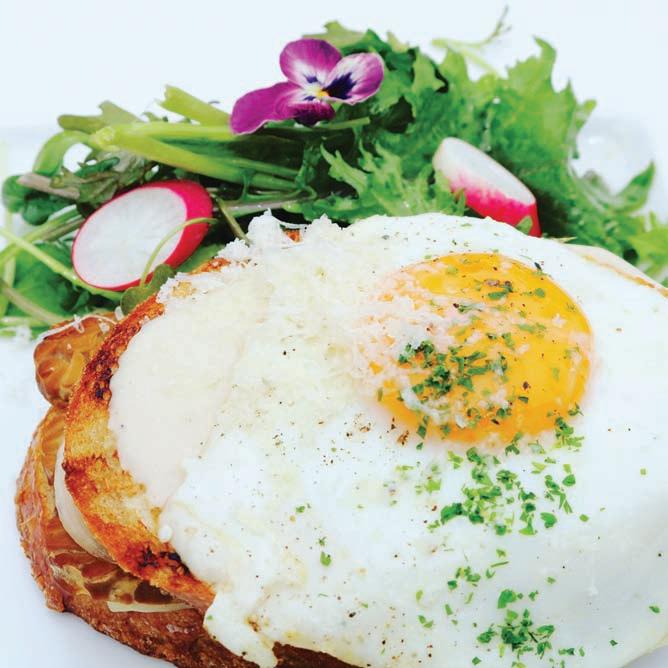
Like wine, sake can be serious business and a subject matter for refi ned palates. Like wine, it can also be playful. I am talking about the Sake Bomb, a theatrical ritual involving chanting and fi re. One third of a mug of beer is poured, and chopsticks are placed on top like train tracks. An ounce of sake is poured into a shot glass balanced on the chopsticks, and then the chopsticks are lit so they smolder slowly. Meantime, the participants yell “sake, sake, sake, bomb, bomb, bomb” while waiting for the suspenseful moment when the chopsticks collapse, and the shot tumbles into the beer. This little bit of alcohol drama is a great icebreaker with the people at the adjacent table, which may be the point of the exercise. As another playful option, E:Ne has honoured the city by incorporating Victoria’s own Shaft cocktail, though here it is a Shaft Sake Bomb, with sake falling into a blend of vodka, kahlua, Bailey’s and espresso.

One of the sake sommeliers can always help you with your choice. If you want to dive into the subject of sake and tap into the sommelier’s expertise, visiting on a Tuesday, Wednesday or Thursday increases your chances of getting a quiet, in-depth conversation going. E:Ne embraces more of a party vibe on the weekend, which is when you might see the chopstick s flying. Private sake-tasting events can also be planned, and a future sake education space is in the works. Whichever route you take, you will be entering a portal to the fascinating world of sake.

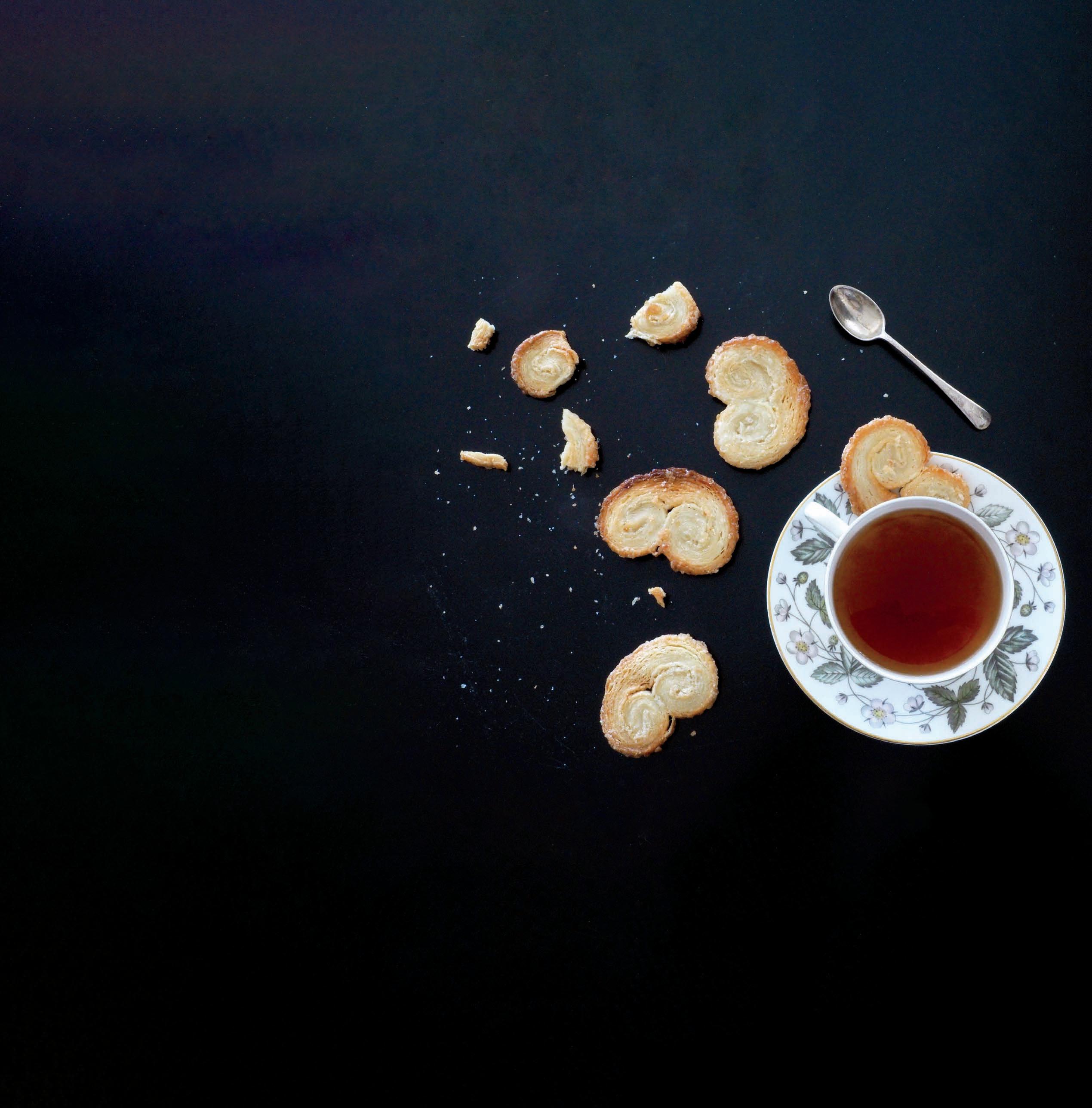
The French are extraordinarily inventive when it comes to pastry, and there’s no greater testament to their ingenuity than puff pastry. Light and crisp, with layers that shatter with each bite, puff pastry is the prima donna of pastries. Whether the French actually invented puff pastry is debatable (historical references and folklore often contradict). If, however, you’ve attended a French culinary school, you know that France is responsible for all things delicious.
Classic puff pastry is created by sandwiching a slab of butter between two layers of dough. The dough is then rolled out and folded in thirds. The rolling out and folding process is repeated six times, with refrigerated resting periods between each fold. The folding creates a multilayered dough (729 layers to be precise) that swells when exposed to high heat. The steam from the melted butter causes each layer to puff yet remain intact. Ingenious, indeed.
However impressive, few have the time, patience or inclination to prepare puff pastry from scratch. Fortunately, pre-made puff pastry is as near as your local grocer so time-strapped cooks can create French-inspired pastries with ease.
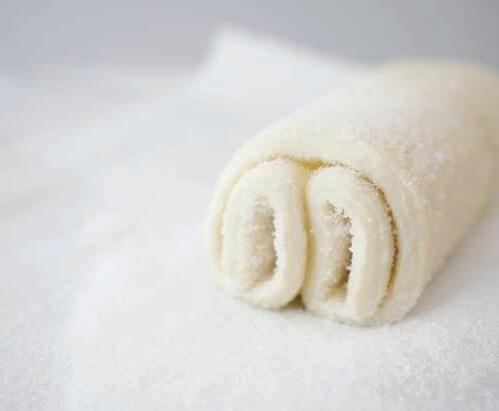
I’ve shared two of my favourite puff pastry recipes on the following pages—one sweet, the other savoury.
First up, if you have a fondness for sweets, you’ll love palmiers, a light, crisp cookie that is nothing short of addictive. Palmier is French for palm tree, a resemblance I can barely make out. (Still, I prefer palmier to the cookie’s other names—“elephant ears,” “pigs’ ears” and “shoe soles”—curious descriptions for such a delicious treat.) Palmiers are easily transformed into savoury appetizers by replacing the sugar with Parmesan cheese. Pesto, tapenade and sun-dried tomatoes make delicious fillings, too.
Next, savoury tarts featuring roasted vegetables and mushrooms atop a lemony ricotta and feta base. These company-worthy, make-ahead tarts are re-warmed and drizzled with a piquant vinaigrette just before serving. Tarts are a fine way to dress up leftovers, so feel free to tinker with your own imaginative fillings. And, once you’ve mastered tarts, you can easily swap the savoury fillings for sweet. Fresh berries and pastry cream, for example, make exquisite summer tarts. Sweet or savoury, puff pastry knows no bounds.
Rich, fl aky, and fun to work with, this quintessential French pastry is as versatile as it is delicious.
Palmiers (pronounced pahlm-yays) Makes 28 cookies.
1 carton, 454g, frozen rolled puff pastry sheets* (thawed)

1 egg, lightly beaten
¼ cup granulated sugar, plus more for dusting

*Each carton contains two puff pastry sheets (10 x 10 inch) pre-rolled. You’ll need only one sheet of pastry for this recipe.
Note: If the 454g rectangular cartons are not available, select a 397g puff-pastry block instead. Roll into a rectangle 10 x 14 x 1/8-inch thick and follow the recipe accordingly (folding the dough along the 14-inch edges). Yields 40 cookies.
Preheat oven 400°F.
that require rolling. Some stores carry pre-formed tart shells.
Thaw the dough and work with it chilled and slightly firm. Once the dough warms, it becomes too soft to easily manage. If this happens, cover and refrigerate until firm.
When not working with the dough, ensure it is completely wrapped in plastic. Pastry can dry out and crack if not well covered, and this affects its ability to rise.
Use a sharp knife when cutting the dough. Dull knives tend to tear and stretch the dough.
To ensure puff pastry tarts rise evenly, score the sides with diagonal notches. (Look closely at the photo of the unbaked tarts on the next page and you’ll notice nicks along the sides of the pastries.)
Sweet pastries taste better and have more crunch when the sugar caramelizes. Water helps: lightly spritz sweet pastries with water just before baking. Fill a spray bottle with cold water or simply place a hand under the faucet and flick the excess water from your fingers over the pastries. Sounds crazy but it works!
Puff pastry should be chilled before baking. The fat in the pastry needs to be firm. Conversely, the oven needs to be hot (400°F). If your oven is temperamental, consider investing in an oven thermometer. (You can usually find a decent one under $15.)
Use your heaviest baking sheets, or double up and stack two. Line baking sheets with parchment paper or silicone baking mats to prevent pastries from sticking. If you enjoy baking, non-stick baking mats are a good investment.
Moist fillings can render savoury tarts soggy. To prevent this, line tarts with grated Parmesan cheese just before baking.
Note: Although frozen puff pastry might evoke sweet buttery goodness, most commercial varieties are made from a mixture of vegetable oils. Purists might balk, but if you’re vegan, or have dairy sensitivities, this grocery staple can be a blessing. A buttery exception is Dufour Pastry Kitchens brand, available in some specialty stores, including The Root Cellar in Victoria.
Unfurl one (10 x 10-inch) sheet of dough onto parchment paper dusted with 2 Tbsp sugar. Sprinkle another 2 Tbsp sugar on top of the dough and gently press on the
Fold the dough in half, along the seam, to create a cylinder. Dust with additional sugar, cover and refrigerate for at least 30 minutes.
Cut the chilled dough into ⅓-inch-thick slices and transfer to parchment paper. Dust with additional sugar, cover with another sheet of parchment and gently flatten with a rolling pin (as pictured). Arrange on a parchment-lined baking tray, leaving an inch between each. Cover and refrigerate for at least 30 minutes before baking.

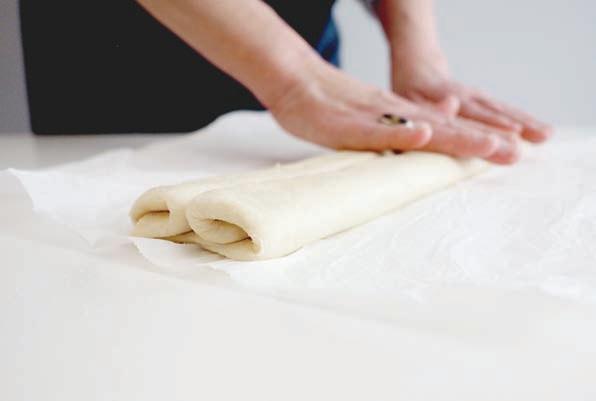
To promote caramelization, lightly spritz the cookies with a bit of water just before baking. Fill a spray bottle with cold water or place a hand under a water faucet and flick the excess water from your fingertips directly over the pastries.
Bake in a preheated hot oven 6-7 minutes or until the edges are golden. Remove the baking tray, turn the cookies over with a spatula, and return to the oven for 4-5 additional minutes or until golden. Cool on a wire rack.
Brushing the dough with egg wash, before folding the dough in half, keeps the folds intact
Flattening the dough with a rolling pin creates a thin, crisp cookie
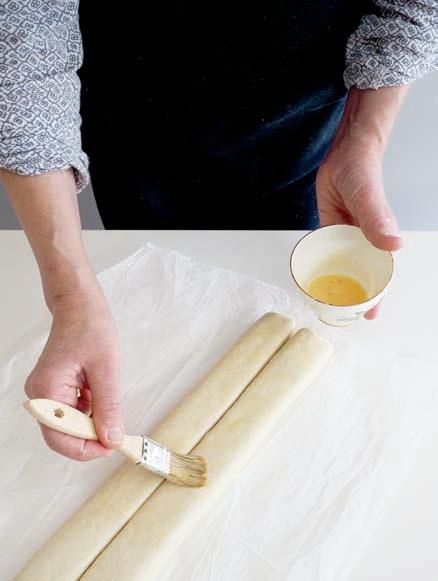

Tips for working with frozen puff pastry

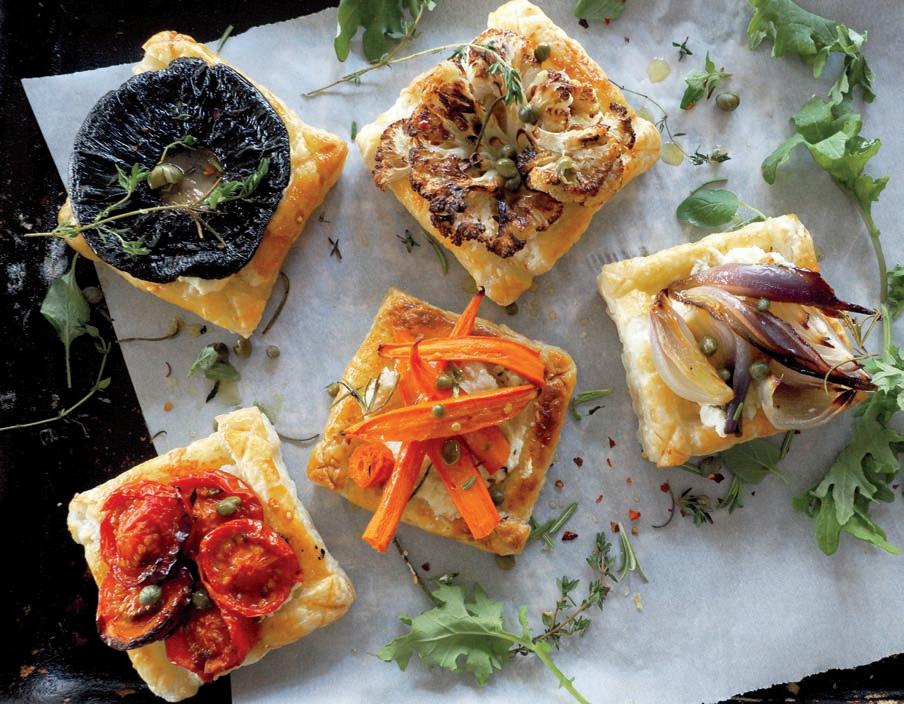

Makes 9 tarts (3¼-inch square).
If you’re not familiar with working with frozen puff pastry, refer to the tips on the preceding page.
Tarts
1 carton (454g) frozen rolled puff pastry sheets* (thawed)
1-2 Tbsp all-purpose flour (for dusting)
1 egg, lightly beaten
¼ cup grated Parmesan cheese
1½ cups ricotta cheese, strained**
½ cup (3 ounces) crumbled feta
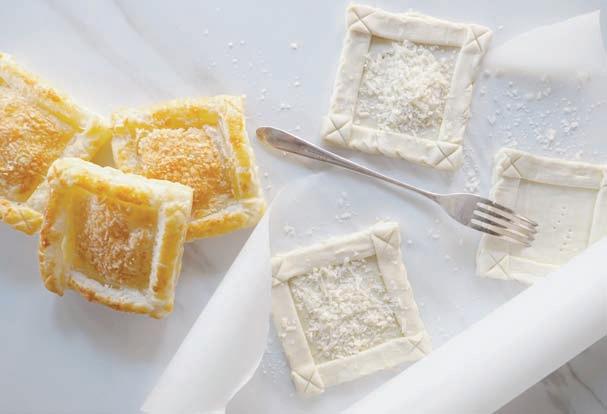
Lemon zest from one lemon, plus 2 Tbsp lemon juice
Kosher salt
1¾ pounds of combined vegetables (cauliflower, mini carrots, tomatoes and/or shallots) or 8 portobello
mushrooms or a combination of the two
1 Tbsp olive oil, plus more as needed if using mushrooms
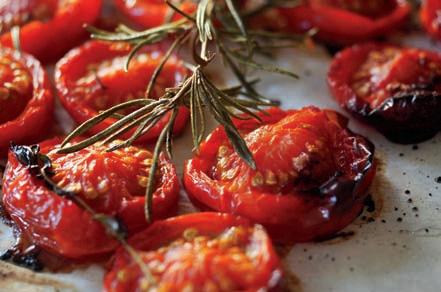
1 Tbsp butter, if using mushrooms
Dressing
¼ cup white wine vinegar
¼ cup vegetable oil
1 clove garlic, finely minced
1 tsp fresh thyme, plus extra for garnish
2 anchovies, rinsed, drained and finely minced (optional)
1 tsp capers, roughly chopped
1 tsp Dijon-style mustard
Kosher salt
*Each carton contains two puff pastry sheets (10 x 10 inch) pre-rolled. If the 454 g rectangular cartons are not available, select two 397 g puff pastry blocks instead. Roll each block into a square 10 x 10 x 1/8 inch thick and follow the recipe accordingly. Reserve excess dough for another use.
**Some brands of ricotta have more liquid than others. To ensure the cheese doesn’t leave your tarts soggy, drain the ricotta as follows: Place a fine-mesh strainer over a bowl. Line it with cheesecloth and add the ricotta. Cover and refrigerate for a few hours, preferably overnight. Discard any excess liquid.
Tart Shells
Preheat oven 400°F.
Unfurl one (10 x 10-inch) sheet of dough onto parchment paper that’s been lightly dusted with flour. Cut into 9 equal squares (3¼ x 3¼ inch). Cover with plastic wrap and refrigerate to firm the dough.
Unfurl the remaining 10-inch sheet of dough onto parchment paper that’s been lightly dusted with flour. Cut the pastry into 12 narrow strips, ½ inch wide. Cut the strips into 3¼-inch lengths. These will form the tart’s sides. You’ll need four 3¼-inch strips per tart, 36 in total. Cover with plastic wrap and refrigerate to firm the dough. Working in batches (leaving the remaining dough refrigerated), brush the edges of each square with the beaten egg. Place the strips of dough (four per tart) around the egg-moistened edges, overlapping the dough at each corner, to form the tart’s sides.
Score the corners of each tart with an X using the dull side of your knife. Score the sides of each tart with diagonal notches, to help the pastry rise evenly. Finally, poke holes into the base of each tart (as pictured). Cover and refrigerate the completed tarts while assembling those remaining.
Place the chilled tarts onto a parchment-lined baking sheet leaving an inch or more between each. Dust the base of each tart with a rounded teaspoon of Parmesan cheese. Brush the top edges with the remaining beaten egg. Bake in a pre-heated oven on the middle rack 10-15 minutes, or until golden and cooked through, rotating the pan halfway through baking.
Cool on a wire rack.
In a small bowl, combine the strained ricotta cheese, crumbled feta, lemon zest, lemon juice and a pinch of kosher salt. Set aside.
sprinkle evenly with ½ tsp kosher salt.
Roast in a 400°F preheated oven for 25-30 minutes, or until tender, rotating the pan to promote even browning. Check the vegetables after 8-10 minutes; if using a combination of vegetables, some will cook faster and need to be removed earlier. Alternatively, roast each variety separately.
If using mushrooms: Clean the mushrooms with a damp cloth. Remove and reserve the stems for another use. Heat 1 Tbsp oil and 1 Tbsp butter in a medium non-stick skillet. Add the mushrooms, without crowding the pan, gills facing down. Cook over medium heat until the caps have softened slightly. (They will shrink as they cook.) Turn the mushrooms over and sprinkle with a pinch of kosher salt. Continue to cook, adding additional butter or oil if sticking, until the mushrooms are tender.
Fill each tart with 2 generous tablespoons of the ricotta and feta mixture. Top with your choice of roasted vegetables and/or mushrooms. [If not serving immediately, cover and refrigerate at this point. Reheat prior to serving.]
Heat the tarts in a 400°F oven for 10-12 minutes or until the cheese mixture has warmed through.



 story by: Adrien Sala
story by: Adrien Sala
There is little doubt that Victoria is a city that has spawned a thousand restaurants. From bakeries and bistros t o fi ne dining and grab-and-go, new eateries constantly emerge.
Sadly, not all can become a success. Sometimes it’s just bad luck, bad timing. Other times the onus is on the people behind the restaurant, who failed to take the temperature of the local food scene or overestimated the appetite for something too niche. But for the fortunate ones that do make it through, Victoria can be a place that keeps you employed for the length of a career. But what is it? What is the secret behind one restaurant staying open over the long-term and another not?
“I’D SAY IF WE’RE STILL HERE in another 10 years, it’ll be because of our caramel chicken,” says Patrick Lynch, co-owner and chef of Foo Asian Street Food, which has managed t o fi nd success year over year and is now in its tenth year of business. “I think restaurants that last have to do at least one thing really well.”
It’s hard to argue. Think of Pagliacci’s, which opened its doors four decades ago in 1979. “Pag’s” does tasty, approachable Italian food, but it’s the bread that everyone brings up whenever they talk about it—the salty, warm focaccia that comes with every meal and feels like a hug from your grandma. Or, consider Brasserie L’école, the best French bistro in Chinatown, and its steak frites. The menu there changes regularly based on the season or what is available—but there is always steak frites, and people return again and again for it. Tapa Bar hasn’t made signi ficant menu changes in nearly 25 years—people know it, and they love it and keep coming back.
Of course, there are other factors. Personality goes a long way. Zambri’s is famously hospitable and makes you feel at home. Part of Foo’s success is the parking lot right out front. Fiamo caters to a late night crowd, as does The Mint, which helps keep them busy as other restaurants close down for the evening. Occasionally it’s dumb luck, but that is the rarest kind of success.
Whether or not you’ve eaten at one of the restaurants that have stood the test of time recently—or ever—if they’ve lasted 10, 15, 20 years or more, it’s safe to say that they’ve found their own secret ingredient for success. What follows is a look at a few of the restaurants that have lasted. Maybe you haven’t thought about them in a while, or perhaps you’re a regular, but no matter which way you look at it, these are places that have staying power.




It would be next to impossible to write about restaurants that have lasted in Victoria without talking about Don Mee’s, which has been open for over 80 years. Eight decades is a good run for a human, never mind a restaurant—and this Chinatown establishment is worth the climb up the stairs and into its timeless décor of big round tables, Chinese tapestries and a throng of sta ff weaving throughout, clearing tables, pouring tea and taking a la carte orders.
Famous for its dim sum lunch menu fi lled with Cantonese, Szechuan and Western-style dishes, dining here is a chaotic, fun and adventurous experience. Point at something on a trolley being pushed through the room, and it’s yours to try. If you’re an experienced dim sum diner, you’ll know what you’re getting, but for those of us who rarely do it, there’s a joy in being not entirely certain what you’ve ordered but fi nding out it’s delicious. It’s a great room for big or small groups and is perhaps the longest running restaurant in town.
There is no shortage of Italian restaurants that have lasted in Victoria, and while some people may not consider Italian Food Importers a classic restaurant per se, this supplier of authentic Italian ingredients has a lunch crowd that would make any restaurateur envious.
These are places that have staying power.




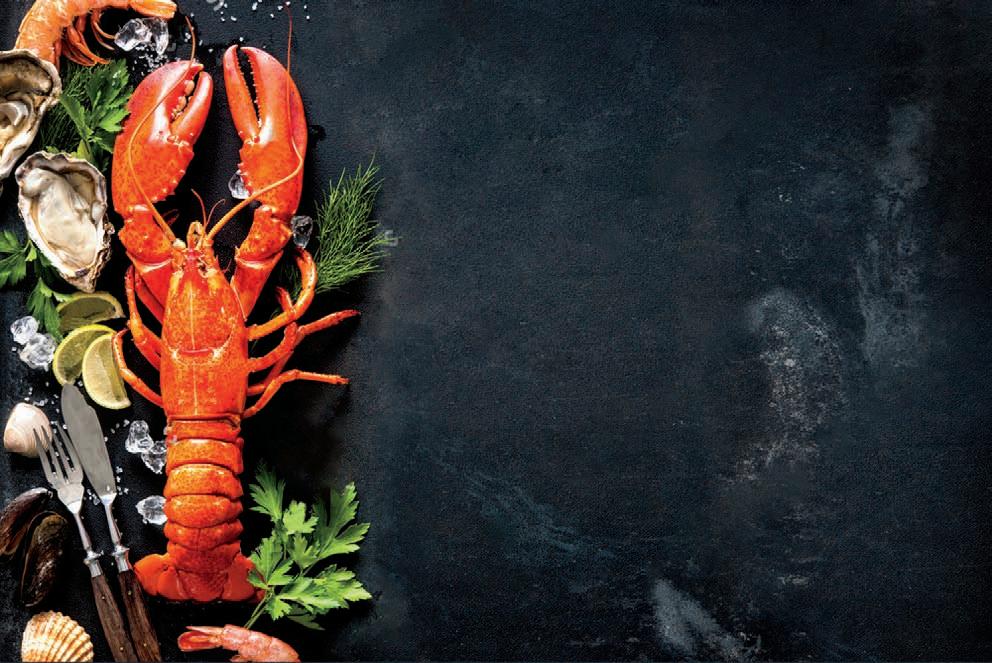

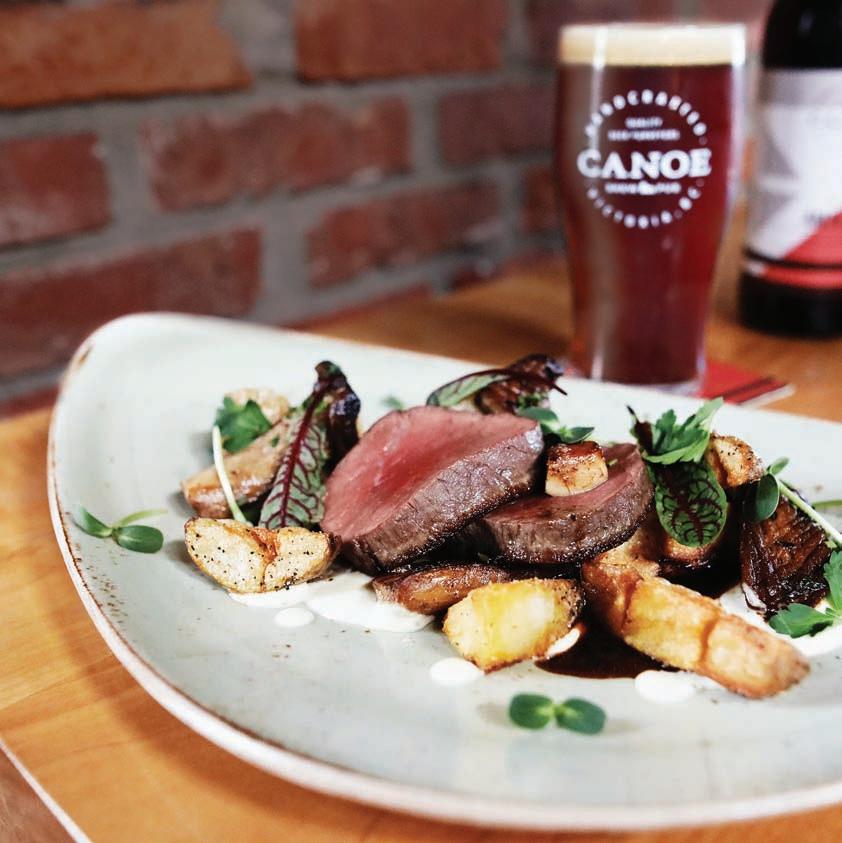
The location has a history that dates back as far as 1957, but the business was purchased in 1985 by brothers Massimo and Maurizio Segato, who have managed to create an Italian deli experience in the heart of downtown. It’s a bustling place, with sta ff b ehind the counter dancing around one another in an attempt to move the crowd through at record pace. With over 20 panini options on the menu (or the chance to design your own sandwich), a daily pasta with fresh parmesan cheese and buttered bread, plus countless Italian salads, cheeses, cured meats and coffee, Italian Food Importers is an a ffordable, fun and e ffi cient place to get in and get out for the lunchtime rush.
Café Brio is one of those timeless restaurants that has been successfully operating on Fort Street for over 20 years. Owned and operated by business and life partners, Greg Hays and Silvia Marcolini, Brio is an inviting, comfortable place to enjoy fresh salads, pasta, seafood and meat dishes, all from local providers and farmers.
“We combine the most important aspects of dining,” says Greg Hays. “Food, ambience and service.” With Executive Chef Laurie Munn at the helm for over 13 years, and several of the sta ff working there for upwards of 20, Brio has a genuine family feel. As Victoria grows and new buildings pop up throughout, this cozy little restaurant is a memorable place to dine “family style”, enjoy some excellent wine and conversation and settle in for a relaxed evening.
If ever there was an example of sticking with what you’re good at, Ferris’ is it. From burgers, pasta and salads to the nourishing and cold-killing chicken penne soup with dumplings, or an array of fresh or grilled oysters, the constant quality and very reasonable prices have cemented Ferris’ as one of Victoria’s longest-running restaurants.
First opened in 1991 as Ferris’ Oyster and Burger Bar Restaurant by Tom Ferris, this long and narrow space on lower Yates street has transformed into a plac e fi lled with friendly faces and sta ff t hat have been part of the team for the long haul. Chef and co-owner, Dave Craggs, who came on in 1998, pulls culinary in fluences from Mediterranean countries, in particular, Spain. The food is fresh, the prices right, and you always walk away satis fied.
It’s easy to forget that just outside the doors of Spice Jammer is a bustling city, with pedestrians, cyclists and vehicles passing by in all directions. Inside it is quiet and calm, with low lights and Eastern music creating the feeling of being in a di fferent country altogether.
Originally opened in 1991 by husband and wife, Amin and Bilkiz (Billie) Essa, Spice Jammer combines East African and East Indian cuisine and is both comforting and exotic at the same time. From Tandoor wood -fi red dishes to vindaloo and buttered chicken, what keeps people coming back to this little gem is the authenticity that was instilled by Amin with his Kenyan roots. Sadly, Amin passed away in 2004, but his legacy lives on in this resolute Victoria restaurant.
1425




One of the few Mexican restaurants to go the distance in Victoria, Café Mexico has been anchoring Market Square since it was opened in 1986 by Brad Olberg. Over the past three decades, this busy spot has survived some tough times, includin g a fi re that gutted it a few years back. Not to be undone, Café Mexico opened again with fervour and is now the best spot in town to explore your taste for mezcal. Enjoy the atmosphere while snacking on homemade chips and salsa, tacos or enchiladas, and dive into one of the best margaritas in Victoria.
“We combine the most important aspects of dining—food, ambience and service.”
— GREG HAYS
The natural beauty and temperate climate keep migration to this corner of the country constant, especially from other parts of Canada, so there’s a broad cultural mix.
But the CRD is not Toronto or Vancouver—there’s no busy Little India, Greektown or Italian district in which to explore authentic flavours. In fact, a full 80 percent of Victorians list their
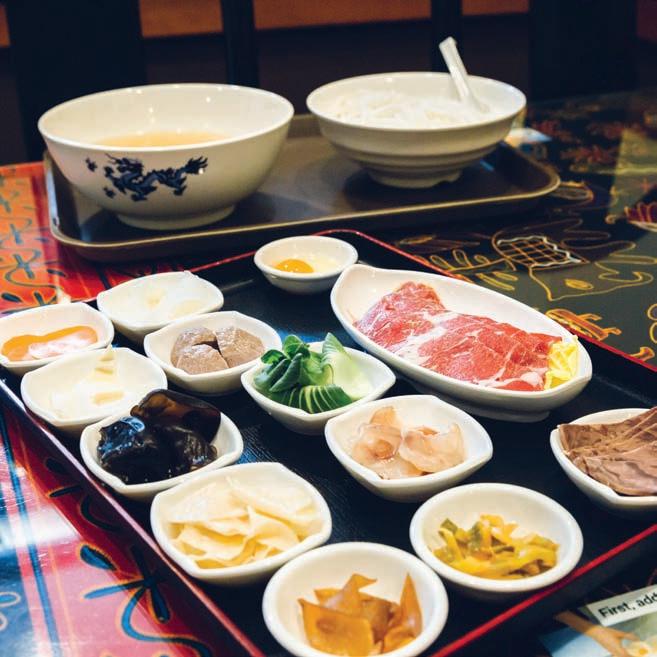
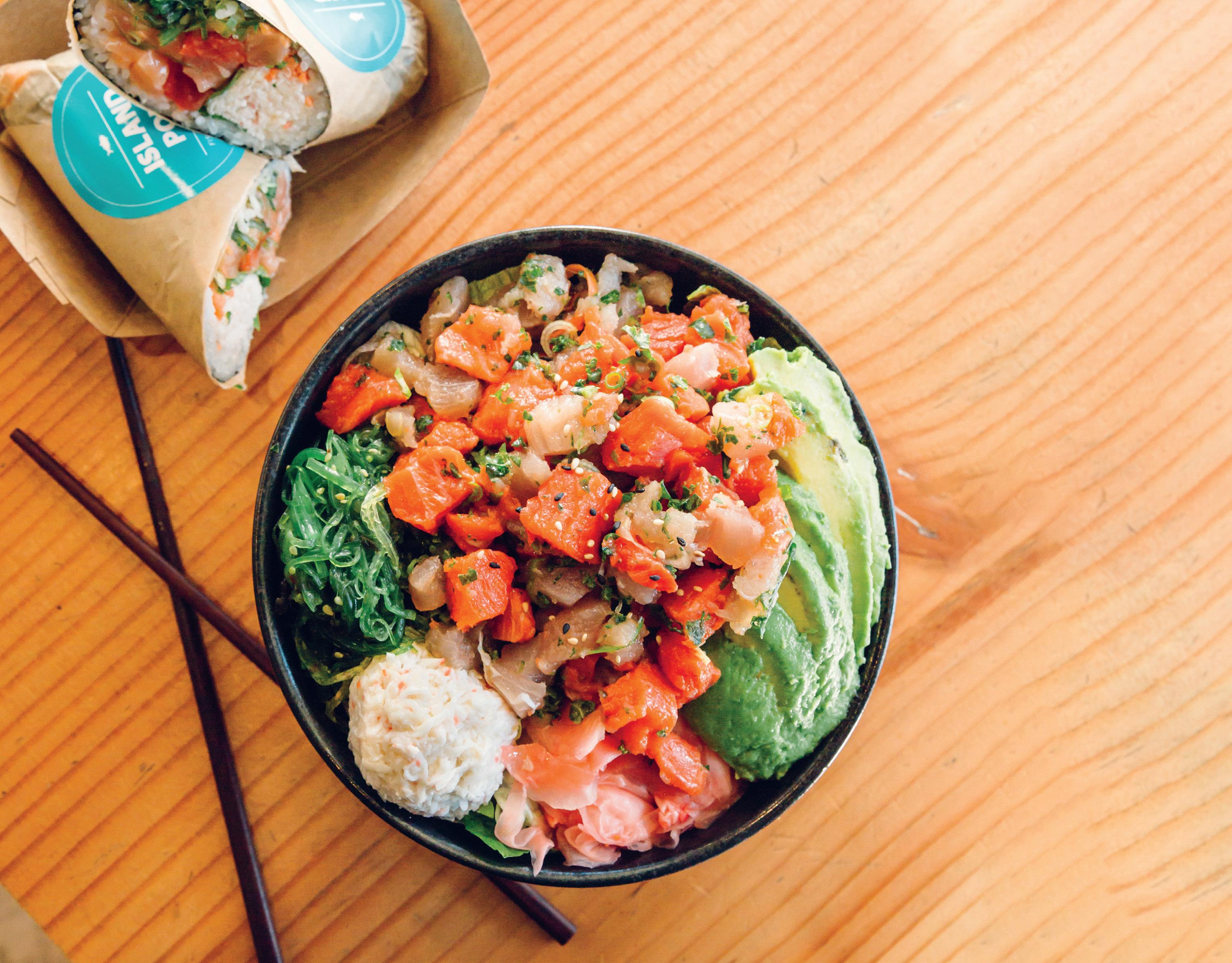
When chef David Chung arrived in Nanaimo from Korea more than a decade ago, it was to learn English.
“My father picked it,” he chuckles, remembering his early enrolment at Vancouver Island University (VIU). The idea was that he would return home after two or three years, but he fell in love with the island.
“I love nature—fi shing, clamming, crabbing,” says Chung. “I just wanted to stay.”
Soon he was studying to be a chef at VIU, then working his way up through the kitchens in top hotels. A year ago, Chung opened The Persimmon Tree restaurant in Langford, featuring his own refi ned take on Korean cuisine. Chung says he chose to locate in a suburban mall, rather than in downtown Victoria or Vancouver, to reach non-Asian customers with his “Modern Korean” menu, one that marries traditional Korea n fl avours with fresh, local ingredients, western technique and contemporary presentation.
“Langford is one of the fastest growing cities in BC,” says Chung. “My target customer is English background, and 95 percent of residents list English as their mother tongue.”
Koreans m ay fi nd there’s fusion in Chung’s deconstructed seared tuna salad or yam noodle japchae, but the fl avours are authentic, as are some of his classic dishes, from bowls of bibim bab and Korean shortribs, to his savoury seafood pancake, or pork and aged kimchi stew.

Persimmon Tree is the fi rst Korean restaurant in Langford, a city known more for its bigbox stores and chain restaurants. But Chung may be part of a new suburban trend, with the recent opening of Taiwanese bubble tea shops and other innovative eateries here, including the new House of Boateng, and the popular Island Poké. Chung’s refi ned Korean food draws savvy foodies from the city, and he’s working to educate the Langford locals about Korean food. He’s redesigned his menu cards to give diners a clear look at the dishes they are ordering, with stylish Instagram-style food photography and detailed descriptions, including GF, vegetarian and vegan choices.
“Ramen and dumplings were the most popular when I fi rst opened,” he says. “People don’t know what to expect, so they go for something safe. Now, with the pictures, people order the mackerel, the tuna salad and the bibim bab.”
It’s been a learning curve for all, introducing a new cuisine while balancing local tastes with Korean traditions. To let diners control the heat, Chung serves essential additions like chili paste, kimchi and gochujang on the side, which can become a problem if diners don’t use them.
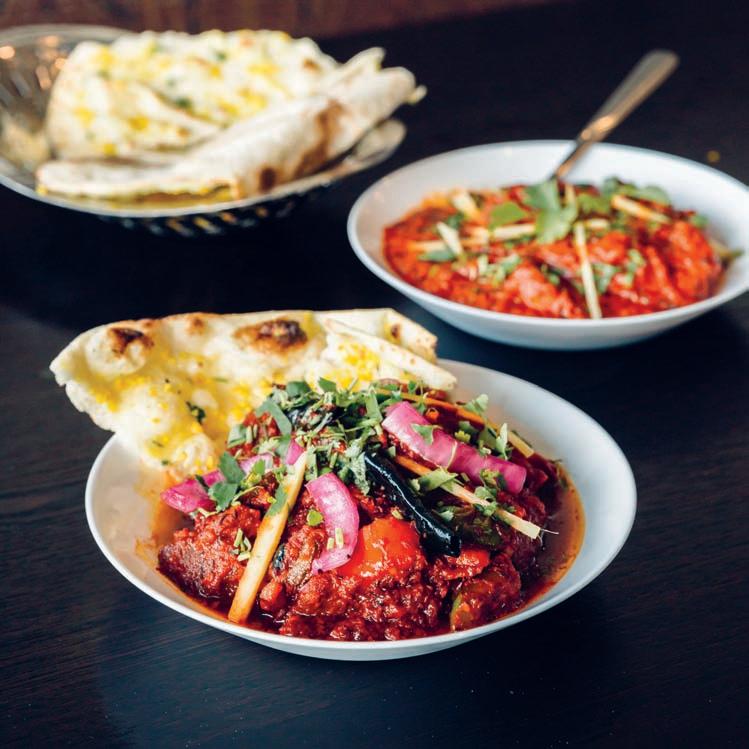
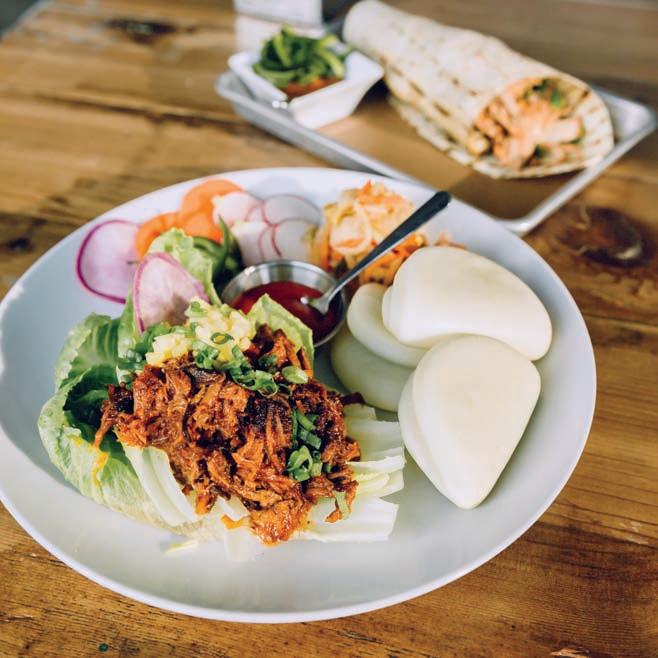
“You need to add these things or the dish will be completely under-seasoned,” he says, “but people are scared and careful. It’s the red chili thing.”
Chung says Koreans may debate the authenticity of some of his dishes—and concedes that his mother’s homemade kimchi, gochujang and miso are more traditional—but his goal is creating a contemporary Korean experience.
“This is the Langford area and this is Canada,” he says, “and this is modern Korean cuisine.”
Naveen Sharma and Kuljeet Singh bring similar culinary education and acumen to their new Indian restaurant, Royal Spice.
The childhood friends are from the same town in the Punjab region of northern India, both are educated in hospitality and hotel management, and use a modern, systems-oriented approach to managing their large restaurant and take-out business. Set in a central retail strip mall that straddles the borders of Saanich, Victoria and Oak Bay, it’s a convenient spot for parking and delivery, says Singh.
“Everyone can reach us, from every part of the city, and customers really appreciate the convenience of parking here,” says Singh, adding their online ordering and delivery system has boosted take-out to half of their sales.
But it’s the food and friendly, efficient service that keeps people coming back.
“The food we are serving is authentic Indian food, using authentic spices and fresh ingredients,” says Sharma, pointing to some of the unique Punjabi-style dishes on the Royal Spice menu. From the creamy Chicken Lababdar and Lamb Handi with peppers, to Eggplant Bharta, Shahi Paneer with cashew curry, dried fruits and sa ff ron, and spinach kofta, there are many interesting dishes to explore. The naan bread arrives hot and blistered from the clay tandoor oven, and the pu ffed bhatura bread with chickpeas and pickles makes a fast lunch.







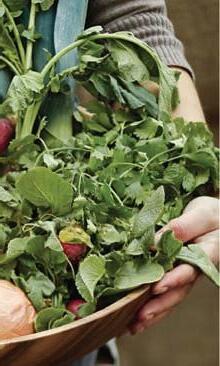


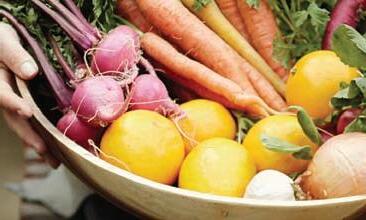
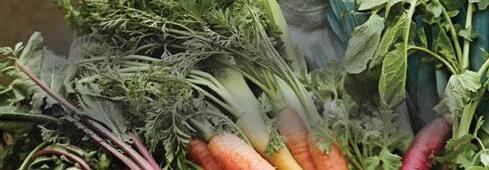


Or you can partake of the daily bu ffet from 11 a.m. until 3 p.m., complete with 33 dishes.
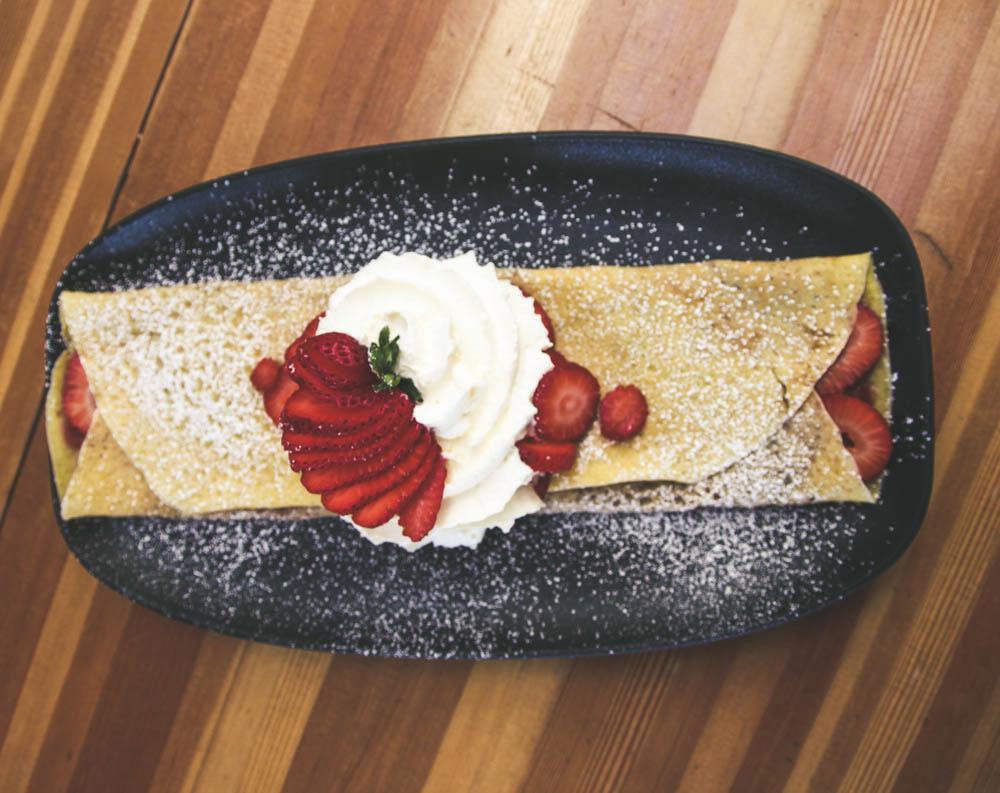
“We prepare food from scratch, everything,” adds Singh. “We have a big team in the kitchen, 24 cooks, including two professional chefs who came from India.” The partner s fi rst joined forces with the former Masala Bites restaurant on Fort Street, then left to open the much larger Royal Spice 18 months ago.
So how did these young entrepreneurs decide to locate in Victoria? Sharma originally arrived eight years ago to work at the Portofi no Bakery while Singh started his Canadian culinary education in Niagara Fall s fi ve years ago and “then I looked for the place with the best weather to live in Canada.”

Victoria’s global eateries run the gamut, from the old-fashioned, family-run “hole in the wall” diners to modern concepts built around trending foods from around the world.

Tacos, falafels, rice and noodle bowls, perogies, tapas, sushi and poké—all are among the global street foods that have evolved into the popular culinary lexicon. And all have inspired independent Victoria restaurants, from Tacofi no, Yalla and Bao, to Tapa Bar, Sült Pierogi Bar, Nubo Japanese Tapas, Foo Asian Street Food, and Island Poké.
David Lee and his wife Mel Kim are the young couple behind Island Poké. They arrived in Victoria from Malaysia, via Vancouver, and made a snap decision to move to the island after thei r fi rst visit just 18 months ago.



“We came for a holiday and we just fell in love with the city,” says the former Vancouver sushi chef and carpenter who designed everything from the eclectic signature bowls to the thick, Dougla s fi r tabletops and banquettes at the downtown Island Poké location, which opened early last year. Already, there is a second location in Langford and plans for another or even a future franchise.
With his Korean heritage and Malaysian roots, Lee is unapologetic about his western Canadian take on this Hawaiian staple. His restaurant research took him to poké restaurants in Vancouver, Seattle and Los Angeles, and his mix-and-match poké bar allows patrons to design their own poké bowls, with a base of rice or greens, and a variety of toppings and sauces to complement the marinated, sushi-grade raw salmon and tuna.
“Poké was created by Japanese fi shermen in Hawaii and then recreated in California, so it’s always been a fusion food,” says Lee. Though Hawaiians would never add sesame aioli, corn, jalapeño peppers or cilantro to poké, it works for the customers who line up for fi sh bowls and nori-wrapped “burritos” at the popular spot.
Other city chefs are channelling their own ancestry in new ways, too. Chef Castro Boateng was born in Ghana, grew up in Toronto where he graduated from culinary school, and worked at prestigious hotels around the world. But most recently the local chef has opened his own restaurant and catering kitchen in Langford, House of Boateng Café. With Japanese-born chef Motoharu Nozawa, Boateng has created an ingredient-forward menu that draws on fresh and foraged island foods as well as global and personal inspirations.
(For more on House of Boateng, see EAT ’s Jan|Feb 2019 issue, page 10.)
For chef Kunal Ghose, Victoria’s evolving food scene parallels his own career here. From his beginnings at Red Fish Blue Fish, to the popular Fishhook (now with two locations) and his latest venture, Dobosala Cantina, Ghose draws on his Bengali and British heritage, while ri ffi ng on whatever inspires him from around the globe.
“I’ve been cooking for 34 years, and my specialty has always been melding di fferent fl avours and coming up with new ideas,” says Ghose, sitting in the sunny space with its open kitchen and bike lane drive-thru window for take-out.
The Fishhook menu leans on Indo-Canadian themes, whether it’s his channa-battered pekoras, Tikka Tuna Tataki or Pondicherry Seafood Koftas. At Dobosala, Ghose has looked around the entire Paci fic Rim for inspiration, with rolled tacone s fi lled with adobo-gochujang chicken, rice noodles topped with masala mushrooms, and bao stu ffed with achiote-pineapple pork. “The palate of Victorians has changed,” says Ghose. “People want something di fferent.”
It’s all part of this city’s culinary maturation, a place where people from around the world converge.






 HOYNE BREWING - SEAN HOYNE BREWMASTER
LIGHTHOUSE BREWING - LISA DRAPAKA - BREWER
HOYNE BREWING - SEAN HOYNE BREWMASTER
LIGHTHOUSE BREWING - LISA DRAPAKA - BREWER
Surrounded by an ocean of both great local beer and actual seawater, it’s easy for Victorians to let the rumblings of the global beer industry chug along without capturing much of our attention. We Islanders are an industrious, resourceful people, who acknowledge that a single, major catastrophe could isolate us entirely from all mainland and international trade channels. (No more avocados. Eek!) But when it comes to beer, we are not willing to let nature’s fury or the fickle nature of a rogue Commander-in-Chief dictate whether we are one day cut off f rom the supply. We brew our own.
And to anyone shy of their late 30s, it’s always been this way. The wholesale embrace of Victoria’s distinct and unique breweries has resulted in decades of success, and they are still going strong. But even these local powerhouses are relative babes on the global beer scene—and all owe their house styles and flagship brands to the long, winding evolution of modern brewing traditions. Let’s take a walk back through time, and around the globe, to examine some of the pivotal advances through brewing history, and how they have contributed to our own bustling industry.
To enlighten us as to just how adolescent our local brewing traditions are, we’ve learned from archaeological artifacts that beer was being served to Roman troops in the United Kingdom during the fi rst century A.D. As this predates the usage of now-common ingredients and sanitary practices, the liquid being imbibed as “ale” would have been markedly di fferent from what we know as “ale” by today’s standard.
For one, the overwhelmingly popular bittering , fl avouring and aroma-imparting agent of choice for modern brewers—the hop flower—had not yet been integrated into brewing practices, and brewers instead utilized a number of now- outmoded herbs for these effects: meadowsweet, mugwort and heather, among them. Around 1400, with imported hopped-beer (mostly from the Netherlands) garnering a following, the fi rst hop bines were cultivated in the U.K.
Another 300 years or so later, these hops were integral to the creation of contemporary beer styles that still rank among the world’s most popular—especially in modern craft-brewing circles: Stout, Porter, Pale Ale, India Pale Ale and Extra Special Bitter, among others.
Local Brew: Hoyne - Appleton ESB: A tribute to Frank Appleton, a prominent forefather of BC craft brewing, Hoyne’s Appleton ESB harkens back to a time well before the 1980s. Redolent of crystal malts, and fi nished with a mild dose of earthy, subdued, English-style hops, this sessionable ale embodies the spirit of the U.K.’s brewing traditions. Rich, malty and highly qua ff able, it brings to mind a lifetime of afternoons spent shoulder to shoulder in the dim haze and casual chatter of a local pub.
Prior to refrigeration technology, it was common practice for brewers to rest their casks and barrels in the cool temperatures of purpose-built underground chambers, or natural caves, to avoid spoilage in the heat of summer. In Germany, during this repeated, insular cycle—brewing, fermenting, and aging—the yeast, which does the magical heavy-lifting during fermentation converting sugar into alcohol, went through its own micro-evolution.
A particular strain thrived in its cooler climate, dominating competing strains until German brewers found themselves brewing solely with this unique yeast: Saccharomyces pastorianus This strain has since been isolated, regenerated in sterile lab conditions and used the world over to create the modern iteration of lagers that are now the most-consumed beer style in the world by a very healthy margin.
But the fi zzy, mild, pale-yellow beverage that North Americans have come to equate with “lager” is a far cry from the broad colour spectrum and depth of fl avour that constitutes the European lager canon. Bocks, Märzens and Dunkels—these sometimes-dark, sometimes-hightest incarnations of lager beers—offer a necessary counterpoint to their summery sisters, the Helles and Pilsener.
Local Brew: Vancouver Island - Hermannator : This is not your grandfather’s lager. Brewed in the eisbock (ice bock) tradition, Hermannator is a robust and rich brew to begin with, which is frozen in the fermenter, separating the lower-freezing-point alcohol from all that pesky water. After the water ices up, the remaining liquid is transferred to another holding tank before packaging. And, yes, it is indeed a lager, despite the con fl ict in public perception over whether a lager can be a jet-black, 9.5-percent sledgehammer of a beer.
Belgian brewing processes were also isolating indigenous, unique yeast strains, but with strikingly di fferent characteristics. By harnessing “spontaneous fermentation”—promoting the residence of wild, airborne yeasts and bacteria in freshly brewed beer—very speci fic flavour profi les began to emerge. Since analyzed, separated and reproduced, these combinations of what most brewers consider spoilage agents can now be purchased from yeast banks and injected into a batch anywhere in the world, to replicate the vinous, tart, estery or cidery notes one would achieve from a wild fermentation on the banks of the Senne in Brussels.
Belgian beer styles continue to resonate with craft-beer audiences for their unusual and sometimes challenging flavour profi les. Paradoxically, most are regarded as cutting-edge, while the exemplars of wild-ferment beer are still being produced by some of the world’s oldest breweries.


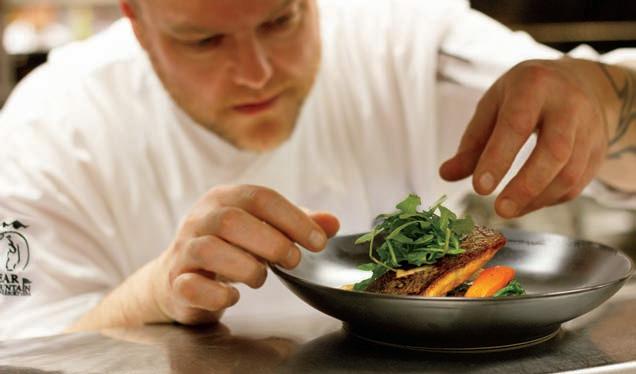

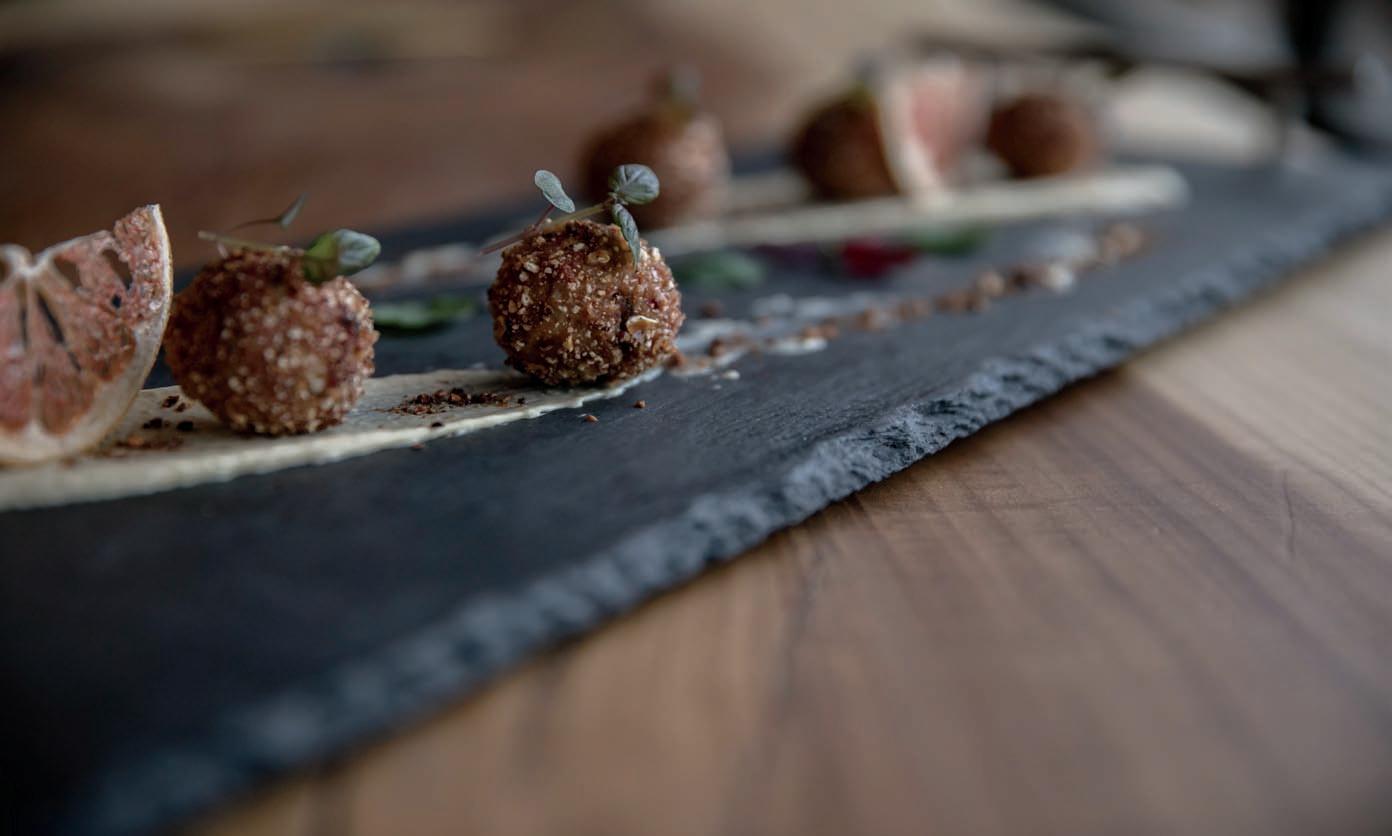
Local Brew: Î le Sauvage - Pretty Much Everything: The lads at Île Sauvage are carving a niche by purposefully inoculating their brews with various bacteria—those enemies of traditional ale and lager brewers—replicating the Belgian tradition of indigenous wild fermentations. Employing di ff erent strains and dosages of “wild” Saccharomyces, Brettanomyces and Lactobacillus , the results o ff er great variety, though all exhibit their trademark mouth-puckering tartness in varying degrees.
Much as we delineate New World vs. Old World wines, so too do “young” brewing nations—void of historical context—shape their own niche in the global brewing scene.
The significant contribution from the South Pacific hails from the narrow latitudinal band that wraps around the southern tip of mainland Australia, Tasmania and New Zealand, which happens to be perfect conditions for growing the hop plant. And from this relatively virgin hop-growing soil, brewers have unearthed a terroir that imparts distinctly different notes to modern beer styles.
A surge in consumer demand for beers heavy with tropical fruit aromas has challenged the traditions of every beer style from Pilseners to IPAs, while also bleeding hop supply from the South Pacific almost dry. But the infrastructure continues to expand to meet demand, and it has cemented the South Pacific nations as New World brewing leaders.
Local Brew: Lighthouse Brewing Co. - Tasman Pale Ale: Many beers use the originality of these hops in extremity, producing a caricaturistic beer with little depth or sessionability. Lighthouse’s Tasman is nuanced and balanced, giving hints of juicy, tropical fruit hop-notes rather than dumping in so many kilos of the stuff that you wake up the next morning with the taste still in your mouth. Craft brewing too often sacrifices subtlety for impact, but this beer marries delicate hop aromas with balanced malt sweetness, making the possibility of a second or third bottle a dangerous likelihood.
Anything you can do, America can do bigger. Brewing is no exception.
The U.S. led the way for the craft-beer renaissance that spawned the global scene as we know it today, primarily based upon a countercultural rage against the Budweiser machine. First came the rediscovery of nationally obscure styles like Pale Ale, Hefeweizen and Oktoberfest. Well-crafted, they exposed the population to the in fluences of the U.K. and Europe, broadening the spectrum of offerings on hand. But the cataclysmic success of the movement categorically relies on the divisive ingredient that separated those “in-theknow” from mainstream beer drinkers: the hop.
The fi rst hop-centric recipe to capture the imagination of the fledgling craft-beer cognoscenti was Sierra Nevada’s Pale Ale—a classic expression of the now-famous Americangrown hop: Cascade. Although once considered a game-changer for its intensity of fl avour, and still highly regarded, this beer is heavily subdued by today’s standards. It’s somewhat hard to believe that it sparked a riot of masochistic intent to push the taste barrier out of acceptability for the general public’s palate. Behold, the U.S. acquisition—and derangement—of the British IPA style into a gum-bleeding, tongue-clicking sensory overload.
The American IPA continues to evolve and morph into unusual forms—Double IPAs, Wild IPAs, New England or Hazy IPAs. And their pervasive foothold on the industry is the only thing that doesn’t look to be changing any time soon.
Local Brew: Driftwood Brewery - Fat Tug: Arguably the most celebrated craft beer to ever emerge from a Canadian brewery, this behemoth represents everything “right” with the North American progression of its British forebears. Like an orchestra with every instrument ampli fied to “11,” it is still in pure harmony within its 80+ IBU (international bitterness units), 7-percent-ABV (alcohol-by-volume) framework. This segment of the craft-brewing spectrum is rife with examples of imbalance, or misplaced con fidence (big fl avours can hide a lot of technical imperfections), but in this case the heavy artillery is handled with the deftness of a close-quarters assassin.
Our showcase wine cellar is the newest addition to the traditional dining options at the Wickaninnish Inn. Not too big and not too small, this intimate venue carved into the bedrock is just right. Book now to share this unique dining experience with friends, family or co-workers. Share a toast in the newly renovated On the Rocks Bar before joining your group for exceptional dining ambiance.

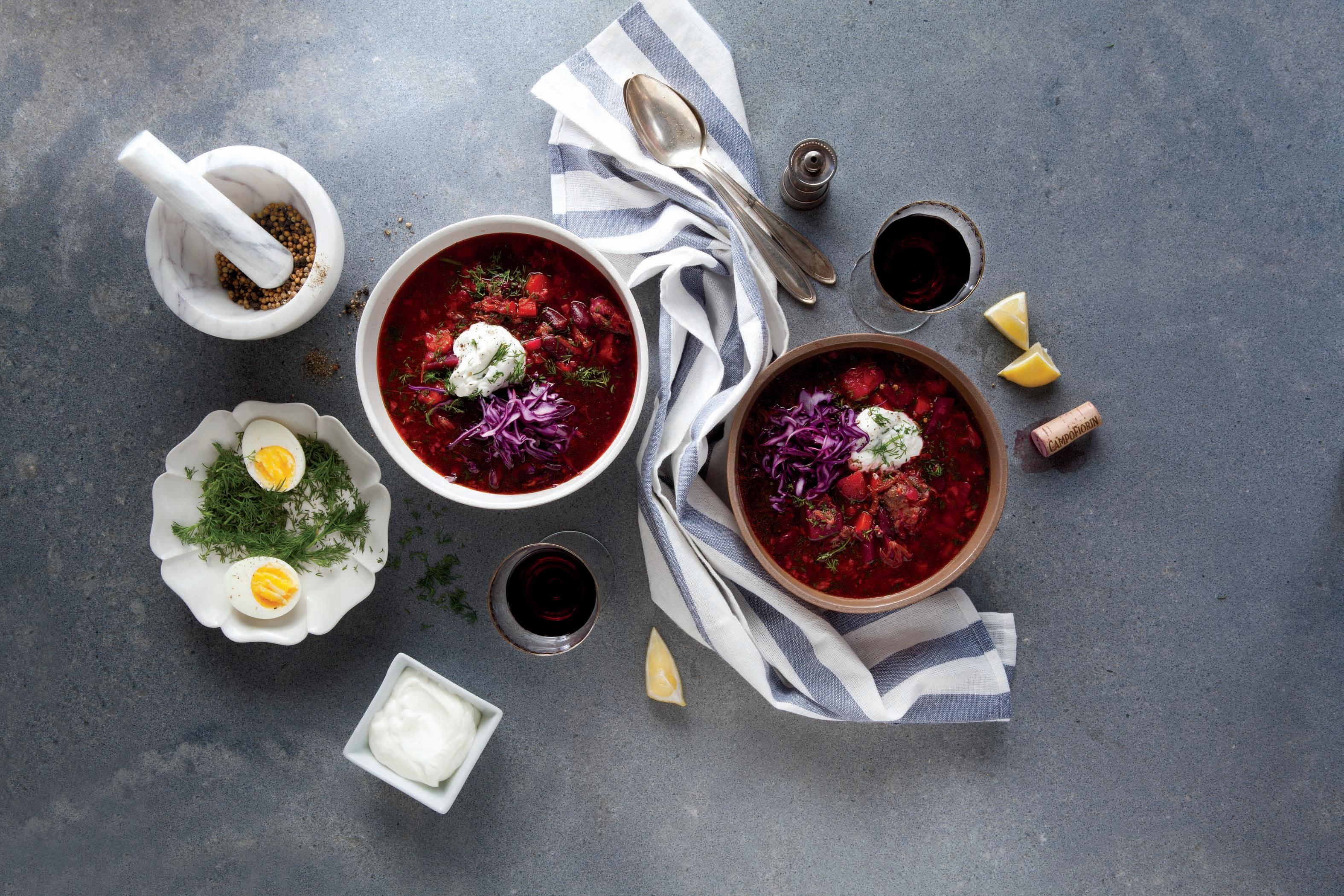
Borscht is rooted in as many di ff erent eastern European cultures as the Inuit have words for snow and each one has its own version of the hearty soup. While beets typically come to mind as the main ingredient, borscht is a seasonal feast. This classic meat version clings to the end of our winter desires. It’s rich and heady, made from oxtail broth and full to the brim with beets, potatoes, kidney beans, and cabbage.

Oxtail is the top choice for turning borscht into a sumptuously rich soup.
It’s a happy combo of bone marrow, lean meat and fat. When slow simmered, it releases achingly rich flavour and full-bodied texture. Makes 8-10 cups.
1.5 kg beef oxtail or short ribs
2 large carrots, cut in half
2 celery stalks, cut in half
½ large onion, cut into quarters
12 cups water
2 fresh bay leaves
1 tsp each peppercorn and allspice berries, coarsely crushed (Tip: use mortar and pestle)
Preheat oven to 325°F. Place oxtail, carrots, celery and onion in a large stockpot or Dutch oven that holds 14 cups.
Pour in water and bring to a boil over high heat, occasionally skimming foam that rises to the surface. Once mixture boils, stir in bay leaves, peppercorns and allspice.

Cover and braise in oven, stirring every hour, until meat is fall-off-the-bone tender, about 3½ hours.
Strain; reserve broth and oxtail, discard veggies, peppercorns, allspice and bay leaves. Place meat in a bowl. When cool enough to handle, separate meat from bones. Shred into small pieces. Wrap and refrigerate meat up to 3 days.
Refrigerate broth until fat rises to the top and hardens, at least 4 hours, or preferably overnight.
Spoon fat from broth and set aside—you’ll need it later to sauté veggies for soup. You should be left with at least 8 cups of the best beef broth in the world!
Cooking the beets a day or two ahead will ease soup prep and save time later on.
Place 3 large scrubbed, unpeeled beets in a large saucepan. Cover with cold water. Bring to a boil. Partially cover; reduce heat to medium and simmer until tender. This will take upwards of 45-60 min, depending on size and age of beets. Drain; run under cold water and then peel. Cover and refrigerate up to 2 days.
Good borscht is a marriage of meaty, sour, and sweet. Now’s the time to bring all those flavours together. Makes 8-10 servings.
Reserved beef fat or 3 Tbsp butter
1 large onion, minced
3 peeled carrots, thickly sliced
1-398 mL can plum tomatoes, coarsely mashed
3 large cooked beets, coarsely chopped
2 large Yukon gold potatoes, peeled and coarsely chopped
1-398 mL can kidney beans, drained
Sea salt and black pepper, to taste
8-10 cups oxtail beef broth (tip: add water to make 10 cups if you don’t have enough)
Shredded oxtail (from making broth)
3 cups thinly shredded red cabbage
3 garlic cloves
1 lemon
Chopped fresh dill, to taste
In a large stockpot or Dutch oven, melt beef fat over medium-high heat. When bubbly, reduce heat to medium. Simmer off excess liquid, so mostly fat remains.
Add onion. Sauté until very soft and starts to caramelize, 15-18 min.
Add carrots. Sauté 5-7 min or until soft. Stir in tomatoes, then beets, potatoes and beans. Generously season with salt and pepper. Pour broth over top; add shredded oxtail and bring to a boil, then partially cover and simmer until potatoes are tender, 20-25 min.
Remove from heat; stir in cabbage, grate in garlic and squeeze in juice from the lemon. Ladle into bowls and top with dill. Serve with sour cream or thick yogurt.
Swap regular sour cream for a dairy-free version. There are many store-bought versions made from soy, nuts or a blend of beans and coconut oil. Or DIY: skim 1 cup cream from a can of full-fat coconut milk and blend in 11/2 Tbsp. each apple cider vinegar and lemon juice; add salt to taste. For a nuttier version, whirl 1 cup soaked cashews with the same ingredients in a high-speed blender.
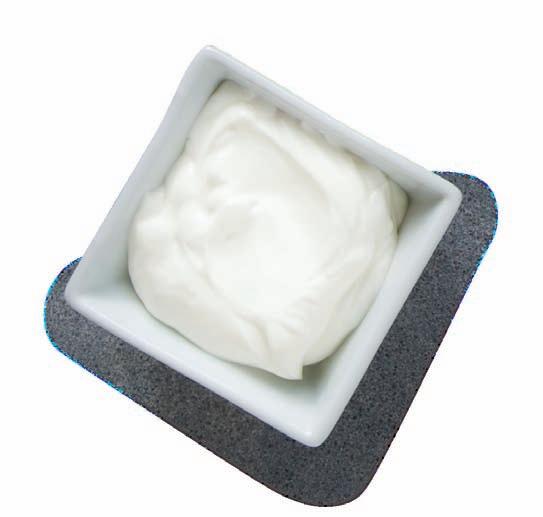
If I told you about a tasty food that could help you maintain a healthy weight, stave off some forms of cancer and Type-2 diabetes, AND reduce your risk for cardiovascular disease, I bet it’s something you’d want to try—right? Well, the food in question is rye, and unfortunately, rye has played second fiddle to its distant relative wheat for decades in Canada and few of us consume it on a regular basis, if at all. That’s a shame because the wholesome grain, which reigns supreme in other parts of the world—most notably Eastern Europe and Scandinavia—has some impressive health and environmental benefits, in addition to being surprisingly versatile in the kitchen. Let’s take a closer look at this under-appreciated grain.
Rye is a member of the Poaceae family, and it’s one of the “true grasses.” It originally grew wild among the barley and wheat fields of Asia and was long considered a weed. While distantly related to wheat, rye is actually much lower in gluten than its cousin. That’s signi ficant because while the grain is unsuitable for celiacs, many people with mild gluten intoleranc e fi nd they can tolerate rye without symptoms. In addition, because it is di fficult to separate the germ and bran from the endosperm of whole rye, rye flour retains larger quantities of vital nutrients than wheat flour.
In fact, rye is literally teeming with health-enhancing nutrients, including: vitamin B5, folate, vitamin E, calcium, copper, iron, manganese, phosphorous, potassium and zinc. What’s more, it’s also chock-full of healthy soluble and insoluble fibre. And interestingly, that load of insoluble fibre found in rye just happens to contain more diseaseing lignans—a group of phenolic compounds—than any other cereal crop. In fact, according to researchers from Cornell University, rye’s unique phenols pack an anti-cancer punch equal to, or in some cases stronger than, those found in many fruits and vegetables.
If you’re still not impressed, consider this. One of rye’s super-hero lignans, known as enterolactone, has been shown to protect against breast and other hormone-dependent cancers, as well as heart disease. What’s more, Finnish researchers have discovered that rye’s fibre is more effective than that of wheat in improving overall bowel health. An added bonus—further studies have shown that rye fi lls us up faster than other cereal grains and helps control blood sugar levels within the body.

But wait—there’s more good news—this undeniably good-for-you grain is also good for Mother Earth. Because rye has a deep root, it is able to capture nutrients and enhance soil health, prevent soil erosion and reduce weeds without the use of herbicides.

Clearly, there are some compelling reasons to eat rye. Thankfully, while wheat and trendy gluten-free fare continue to dominate the marketplace, rye is slowing beginning to garner the attention it deserves, due to its outstanding fl avour and nutritional profi le and the renaissance of artisanal breads. Innovative bakers across North America are increasingly employing traditional European methods to create delicious, naturally leavened loaves that most often feature rye. That scenario is readily evident right here in Victoria, where premier bakeries—most notably, Fol Epi, Fry’s, Moulin Vert, the Italian Bakery and Wild fi re—are all producing rye products certain to have you joining the ranks of rye lovers worldwide. Of course, rye is about more than just “the loaf.” Creative food bloggers are also utilizing the grain in all its various forms to make fantastic risottos, porridge, tarts, cookies and more. “Rye-not” explore the world of rye yourself?

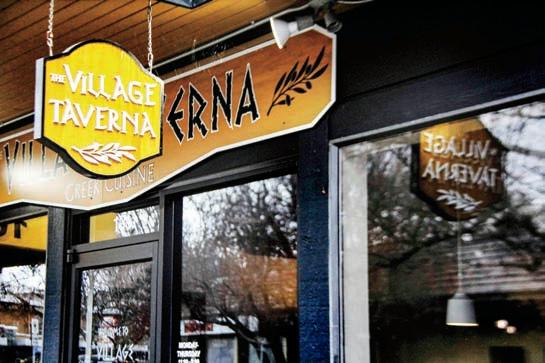

 story by: Adrian Paradis photography by: Sherri Martin
story by: Adrian Paradis photography by: Sherri Martin
In an era when food trends can see momentary success based on the whims of social media, it is refreshing to stand back and appreciate cuisines that have endured. Greek food has been so integrated into North American cuisine that the origins of some staples have becomes hazy. But while Greek food may be standard today, it has seen a steady decline in popularity over the past 20 years or so. Victoria used to be a mecca for Greek food lovers, and while it has said goodbye to some fi ne establishments, there are those who have stood tall for decades and are still going strong today.
1102 YATES ST.
“My life is My Big Fat Greek Wedding—the restaurant version,” says Dimitri Adamopoulos, the owner of this archetypal Greek family restaurant. “I tell people, that’s how our restaurant runs. There’s the food, the love and the drama.” Adamopoulos has a hand in most parts of the restaurant, though he is often found hosting in the front. Meanwhile, his mother and two aunts are cooking in the kitchen, and his father is running errands and buying groceries.
While his parents are originally from Greece, Adamopoulos and his family moved to the Island from Kenora, Ontario. “My parents came here in 1982 for a second honeymoon,” says Adamopoulos. “It was -40° Celsius when they left Kenora, but they were blown away to see cherry blossoms and flowers here.” Adamopoulos moved west in 2009, following his brother and parents.
He bought Ithaka in 2015, but today everything about the restaurant—from the family pictures splayed across the menu, to the objects and photos of his parents’ hometown in Greece—harkens back to Adamopoulos’ heritage and family dynamic. Even the restaurant’s logo (the Greek-style trireme boat) is thematic of Adamopoulos’ philosophy regarding cooperative workplaces. “In order for us to move forward and be a success, everyone has to pick up their oar and row,” he says. “There are no passengers here.”
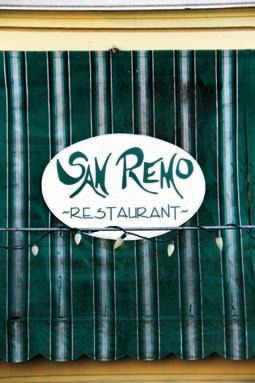
Not surprisingly, the food at Ithaka is just as reflective of this welcoming, family-style approach. “We’re old school Greek comfort food,” says Adamopoulos. “It’s me and my family here. We will take care of you, serve you a nice meal.” If he had to point to one
thing that is most popular among the many dishes, Adamopoulos says their roast lamb is always fall-apart tender, fl avourful and crowd pleasing—based on an old Greek recipe. But, he adds, everything on the menu is good
716 BURDETT AVE.
This is undoubtedly the oldest restaurant on this list, having been operating in Victoria for more than 40 years. You’ll no doubt recognize it by its blue windmill just off Douglas Street. Merry Kavaratzis has been cooking at Millos for 30 years, fi rst starting here when her sister and brother owned it. Her siblings (Kavaratzis is the oldest of seven children) bought the space from its original owner in the 1990s, but sold it to the current owner, John Liu, in 2015.

Kavaratzis came to Canada in 1970, but she says she still cooks food that she knows from Greece. “What I’m making here is what I used to eat in Greece,” she says. “I’m cooking home food that I learned from my mother and my grandmother.” Growing up close to Athens, Kavaratzis says her town was seafood-focused so moving to the West Coast was relatable in that sense.
At Millos, says Kavaratzis, their most popular dishes are the moussaka and spanakopita, though everyone enjoys the tender lamb shank and lemon potatoes. Other classics include grilled halloumi and house-made dolmades. Kavaratzis says they used to be busy all the time, but she has watched a decline in patrons over the years. “People like to go to whatever is new and try new dishes,” she says. “We can’t do that because we only have whatever the Greeks eat. We are not a bistro.” While they may not see the numbers they once did in the winter months, they are still extremely busy over the summer.
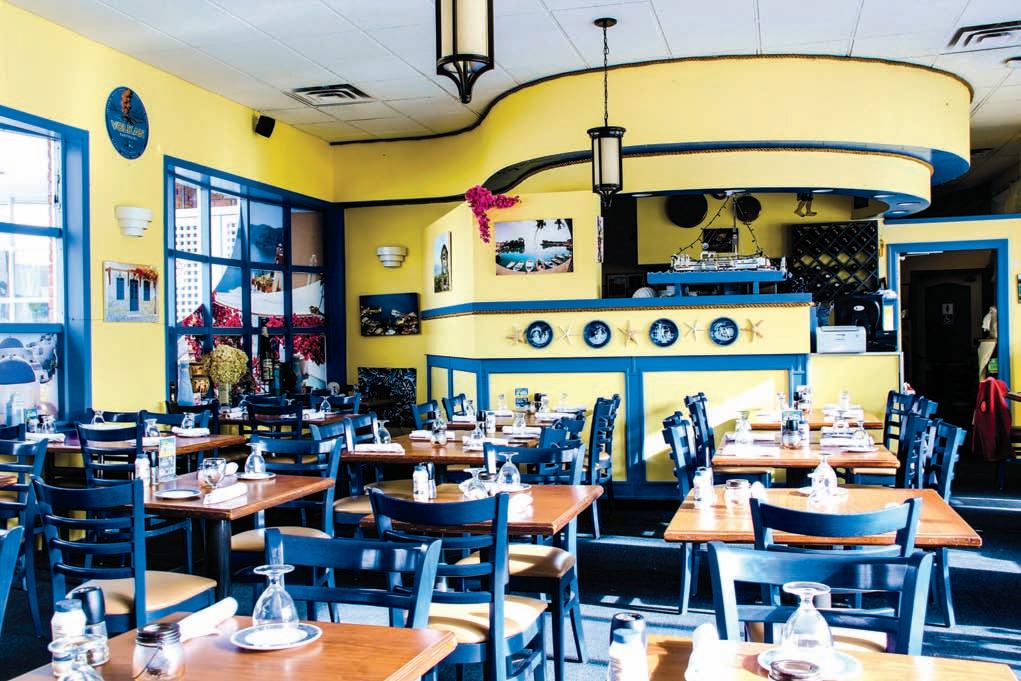
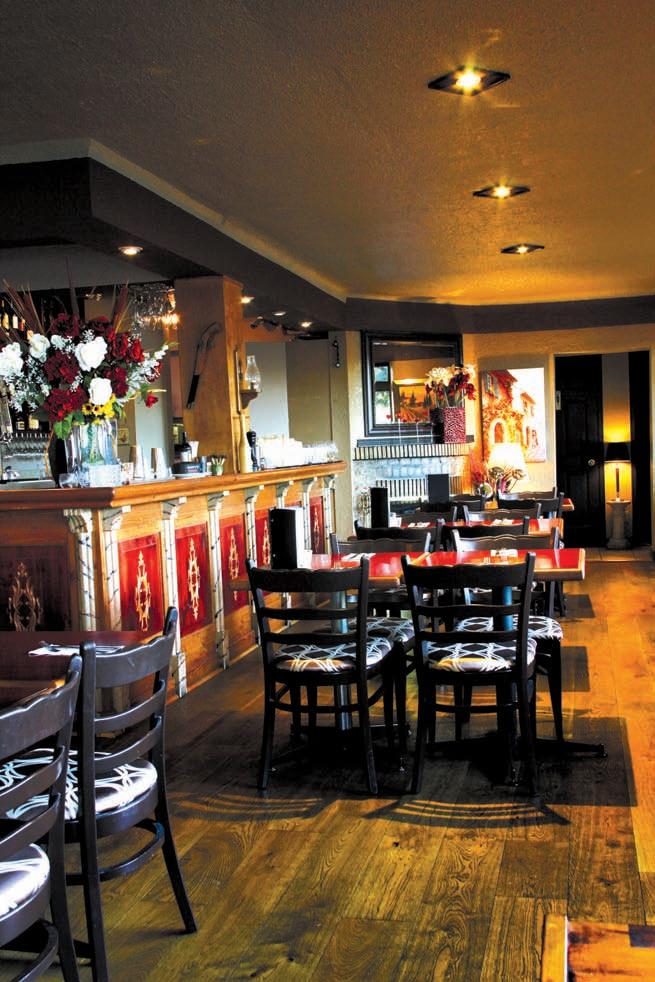
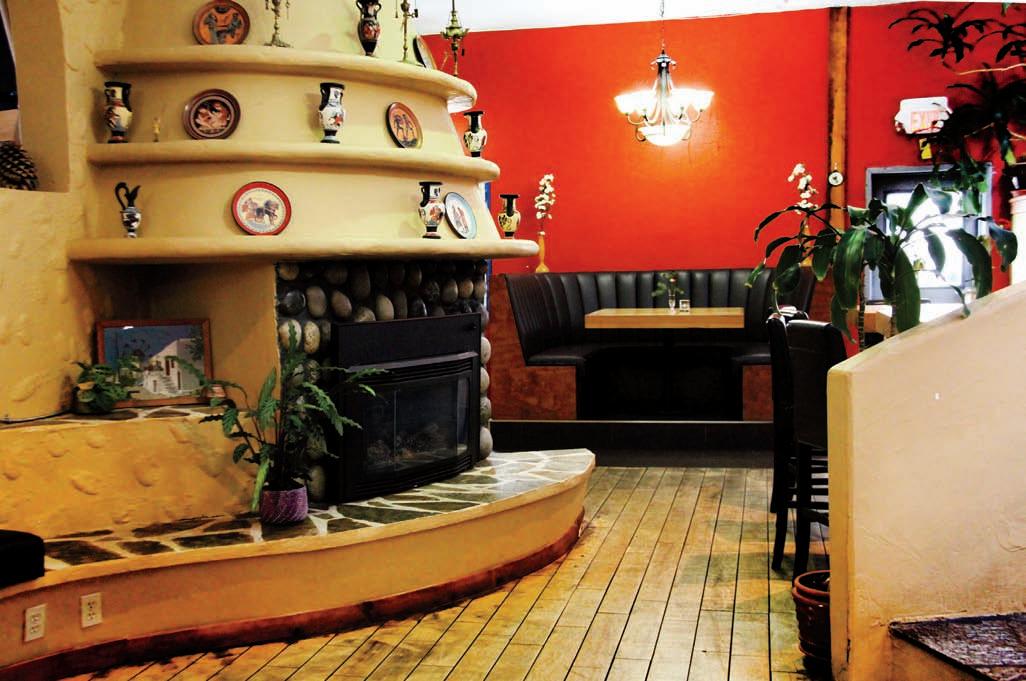
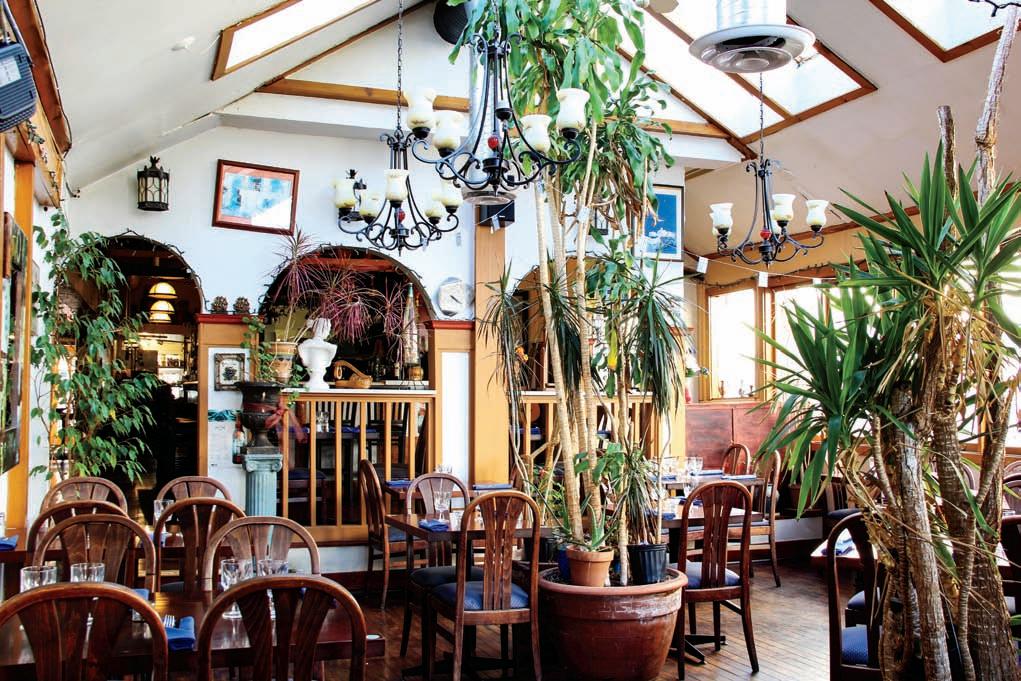
4496 W. SAANICH RD.
Beyond the bustling downtown quarter is a quieter restaurant in Royal Oak catering to both Greek food lovers and the gluten-intolerant. John Selva has owned The Olive Grove for the past six years, but the restaurant itself has been running for the past 30. Selva did his culinary schooling in Singapore, where he also owned a restaurant that focused on Greek and Mediterranean food.
“There are changes when you move from country to country, but we try to be as authentic as possible here,” he says. “The old menu and some of the recipes are more than 30 years old.” While Selva says he has updated the restaurant in the ways it counts, he has tried to preserve much of its heritage. For instance, The Olive Grove was the fi rst celiac-friendly restaurant in Victoria, and Selva has kept that tradition going. He has split his menu in half to include a gluten-free side, complete with pizza, pastas and—of course—Greek options.
Selva says his lamb is by far the most popular dish on his menu. “The key is to make sure it’s nice and tender so that it can fall off t he bone,” he says. While the lamb is popular, they also have a variety of options not seen elsewhere, such as the veal scallopini and salmon piccata with lemon, capers and Greek olive oil.
Selva has also noticed that Greek used to be a much more popular option for diners, but interest in the cuisine has waned. “It used to be one of the top restaurant choices in North America,” he says. “But things change. The new, smaller restaurants are now concept-based.” Another possibility explaining the decline of Greek restaurants, he says, is the labour-intensive nature of the typical dishes. Standards such as moussaka and spanakopita are time-consuming and di fficult to keep within reasonable food costs.
2709 QUADRA ST.
San Remo has been opened for almost 37 years but has been owned by Yi Yang and her husband only since 2015. Yang and her family came from China shortly before taking over San Remo, looking t o fi nd better education opportunities for their children. While they are comfortable now, she says they struggled when they fi rst started out.
Yang exits her kitchen wearing a pin k floral apron and recounts how it was when they started out here. “We didn’t know anything about Greek food,” she says. Before moving to Canada, both Yang and her husband worked in information technology services in China. She says she was awestruck the fi rst time she saw the restaurant. “It was so beautiful and so romantic.”
The previous owner helped them out for about six months, making sure they were comfortable in their roles. Yang worked in the front-of-house (and occasionally helping in the back) while her husband worked in the kitchen alongside sta ff w ho had worked with the previous owner. Being unfamiliar with Greek food, it was important for them to learn to prepare the dishes exactly the way it had been done before. “Once a customer told me the baklava seemed di fferent than it used to be,” says Yang. “So I took a piece to the previous owner’s home and asked him to try it. He said it was exactly the same.”
Today, not only are they comfortable cooking Greek food—just the way they were taught— they’ve grown to love the cuisine. “In the beginning, a lot of it was strange to us,” says Yang. “I had never tried a lot of things before, like the moussaka. But now, we love it. If our kids are away from the restaurant for a few days, they start to miss our food. To me, that’s a very good sign that we must be doing something right.” Aside from their excellent moussaka and baklava, Yang says everyone who tries their calamari falls in love with it. “Customers say we have the best in town.”
The newest member of this list is the Village Taverna, tucked away just off t he beaten path in the heart of Cook Street Village. The restaurant has been going since 2015, but Leigh Perry has been owner since August 2018. “I have always had a passion for restaurants,” says Perry. “When I came to Canada, Greek cuisine was the fi rst that I learned.”
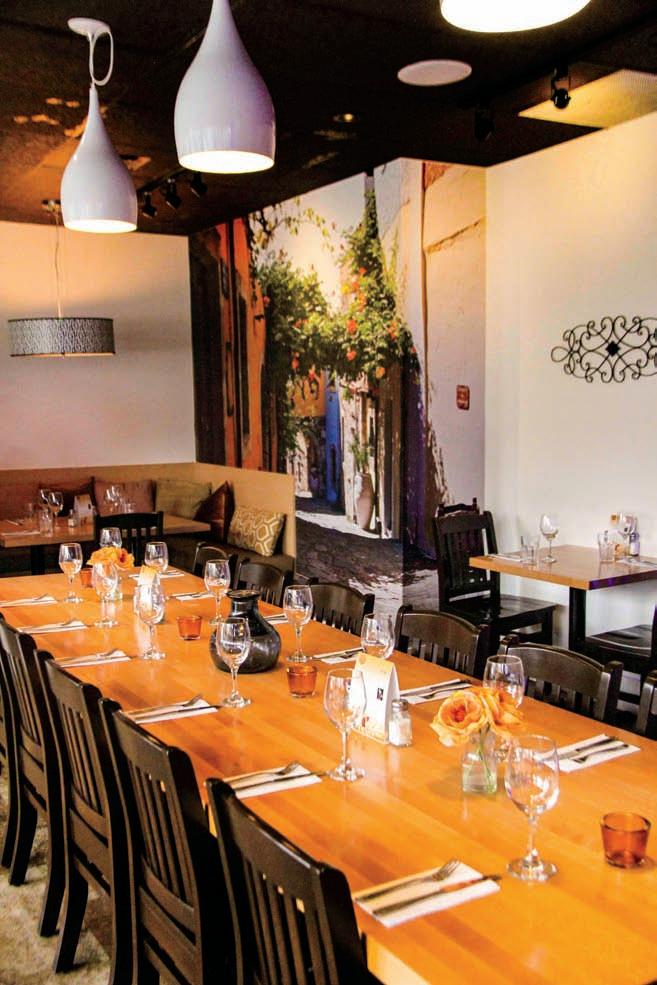
Perry was born in Vietnam but arrived in Canada in 1980 to settle in Burlington, Ontario, with her adoptive Dutch family. “I have always loved the restaurant business,” she says. “It is my passion to make people happy when they enter my restaurant.” She currently works in the kitchen at the Village Taverna along with her son and sta ff . “If asked, I would say we serve classic Greek food,” she says. “I learned and mastered this cuisine while working in Burlington.” She says her lamb is the most popular dish, but they also serve a variety of platters, kebabs and pita wraps.
While Greek food may be representative of the changing times in which old classics are pushed aside for what is new and trendy, it is comforting to know these steadfast options still remain. When the trend dies and the media hype fades, people will undoubtedly return to the simple, family-style, comfort food classics they know and love. Perhaps most important, it’s good to know those Greek lemon roasted potatoes will always be around. I don’t know what I’d do if I couldn’t fi nd those anymore.
Domaine Hubert Brochard Sancerre Terroir de Silex 2017 France $36.00-39.00
Silex i s a fl int- and sand-based soil type most often found in France’s Loire Valley, particularly around the pretty little town of Chavignol in the heart of Sancerre. This is Sauvignon Blanc country, and Domaine Hubert Brochard’s “Terroir de Silex” shows what this terroir can bring to a glass of fi ne wine. Clean and unconstrained by oak, with full-blown aromas of gooseberry, guava and fl inty minerality. The fruit is all there, nicely balanced with fresh acidity and a smoky minerality that pervades through the long bone-dr y fi nish.
Synchromesh Storm Haven Vineyard Riesling 2016 BC $35.00-40.00
This is one heck of a wine! Owner/winemaker Alan Dickinson sourced the fruit from his Stone Haven Vineyard at the base of Peachcli ff Mountain just outside Okanagan Falls. Gorgeous complex fruit with a pu ff of diesel, racy acidity and perfect balance. Very highly recommended, along with the 2017, for immediate satisfaction or for the cellar.
Rivetto Langhe Nebbiolo 2016 Italy $35.00-40.00
This is Barolo country, well almost. The Rivetto vineyards are contiguous with those of Serralunga d’Alba, home to some of the greatest names in Barolo. Close but not quite. Good colour for Nebbiolo, with tobacco, red cherry and exotic spice aromas. Slightly rustic on the palate with an earthy fecundity, gritty tannins and a surprising amount of acidity.
Villa Antinori Chianti Classico Riserva 2013 Italy $30.00-35.00
Villa Antinori’s Riserva is produced from vineyards located in the historic heart of Chianti Classico. Predominately Sangiovese with a splash of Merlot t o flesh it out, this complex Chianti Classico has a lot going on, with layers of red cherry, spice and dusty earth aromas. Medium-bodied, with concentrated fruit fl avours , fi rm but soft tannins and good length.
Veramonte Pinot Noir 2016 Chile $16.00-18.00
Over the years, Chile has earned a reputation for high quality wines offered at prices that are tough to beat. This Pinot Noir is very pretty, with a veritable potpourri of red cherry, raspberry and spice aromas. The palate is silky smooth with delicate fruit fl avours nicely balanced with a blush of soft tannins, juicy acidity and a long dr y fi nish.
France $30.00-35.00
The Chapoutier family has been making wine in the Rhône Valley since 1808, but it was only once Michel Chapoutier took over in 1990 that things really began to happen. He is a true bon vivant and may well be crazy, but his particular sagacity has put Chapoutier ahead of the curve. One of the fi rst in the Rhône Valley to truly embrace the mystical ramblings of Rudolf Steiner, much of Chapoutier is now run on biodynamic principles. CrozesHermitage Les Meysonniers comes from vines that are at least 25 years old. As is all red Crozes-Hermitage, it is 100 percent Syrah. Deep garnet with a nose packed with rich fruit aromas. Raspberries, oui! Blackcurrants, but of course! Licorice, you ask? Why not! Fullbodied, concentrated and unctuous with ripe fruit fl avours, nicely balanced and ready to qua ff w ith friends and lovers or whoever else might be lurking in the wings.
Domaine Faiveley Mercurey 2016 France $44.00-47.00
Red burgundy has near-mythological status in the realm of fi ne wine, yet I am almost always disappointed when I taste a bottle I can a fford. But this tasty little red from Faiveley is worth the effort to fi nd. With more than 330 acres of vineyards, Faiveley is one of the largest land owners and most important Domaines in Burgundy. The commune of Mercurey is located in the Côte Chalonnaise, the largest appellation in Burgundy. Very aromatic and approachable with fresh red fruit and spice on the nose. Medium-bodied with bright cherry and raspberry fruit flavours balanced wit h fi ne-grained tannins and lively acidity. A real cracker!
Jadot Beaujolais-Villages “Combe aux Jacques” 2017 France $23.00-25.00
Gamay is the grape of Beaujolais and few do it better than Jadot. Dry, medium-bodied and chockablock with bright, juicy raspberry and cherry fruit flavours. Jadot opened the Combe aux Jacques Winery near the village of Brouilly in 1998 and has been making wine with purchased grapes rather than buying must or juice. Jadot Beaujolais-Villages often has a splash of Regnie in the blend and has a soft tannic structure to balance the delicate freshness.
Carpineto Vino Nobile Di Montepulciano Riserva 2013 Italy $40.00-45.00
Ranked #11 on the Wine Spectator ’s Top 100 wines of 2018, this powerful Tuscan red is a blend of 90 percent Sangiovese and 10 percent Canaiolo aged in a combination of French and Slavonian oak for 18-24 months, followed by a further 12 months in bottle before release. Red cherries, earth and herbs on the nose, medium-bodied, with concentrated fruit fl avours, nicely balanced with grippy tannins and a long fi nish. Top-notch!
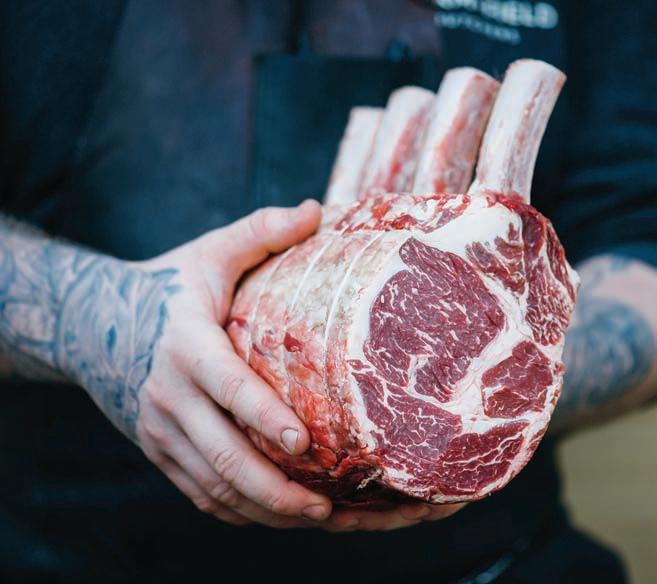
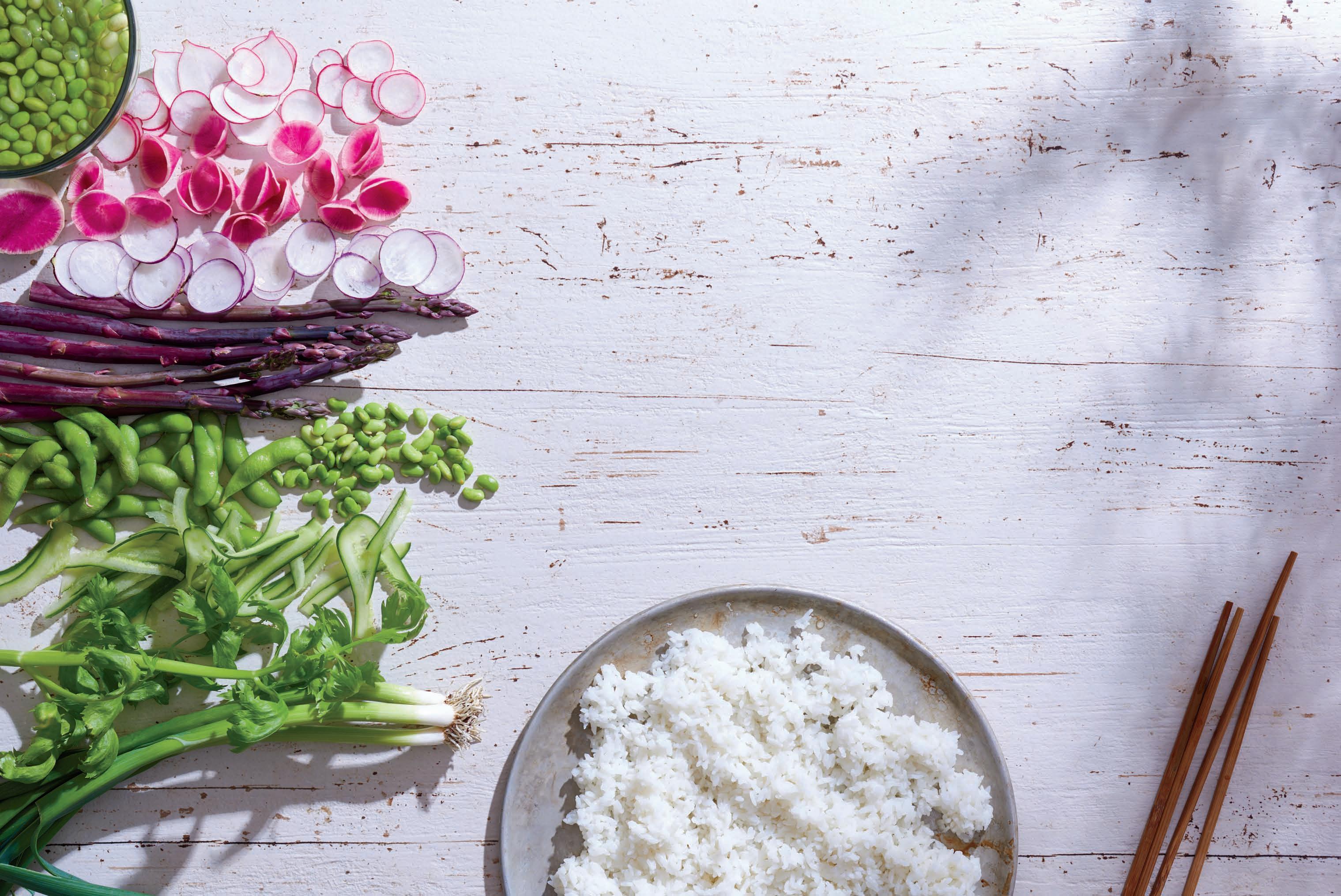

4 servings
Sushi rice
1½ cups (375 ml) sushi rice
1½ cups (375 ml) water
Seasoned vinegar
1/3 cup (80 ml) rice vinegar
1 Tbsp (15 ml) sugar
1 tsp (5 ml) salt
In a large bowl, vigorously wash rice in cold water for 2-3 minutes. Change water often until it runs out of the rice clear. Strain and transfer into a medium saucepan. Add water and bring to boil, uncovered. As soon as it boils, lower heat to low-medium, cover, and cook 12 minutes. Never remove the cover – VERY IMPORTANT! Remove from heat and set aside for 10 minutes, with the cover on.
Meanwhile, prepare seasoned vinegar by combining all the ingredients in a small pan. Over low heat, stir to dissolve sugar and salt.
Transfer rice on a sheet pan lined with parchment paper. Separate rice using a wood spoon. Drizzle with vinegar and continue to separate the grains. Wrap with plastic, and let cool completely.
Raw fish (total of 125g per person)
Smoked black cod, sliced
Sliced mackerel, or white fresh fish
Whole, raw and peeled Humpback shrimps
Garnishes
250 ml (1 cup) edamames
One of each: red, purple and watermelon radishes, thinly sliced
2 asparagus, thinly sliced
Celery leaves
Fresh flowers
Marinated ginger
Sauce
60 ml (1/4 cup) tamari sauce
30 ml (2 Tbsp) lemon juice
30 ml (2 Tbsp) water
Pour all ingredients together into a bowl and set aside.
Assembly
Divide rice over two large plates for sharing (or divide on 4 smaller individual plates if desired). Top generously and nicely with garnishes. Drizzle with sauce.
story by: Adrian Paradis photography: courtesy of Luke and Paige
Victoria’s food scene is saturated with restaurants and chefs producing their own artisanal charcuterie; not that anyone is complaining. But while we’re spoiled with choices today, this was certainly not always the case. Choux Choux Charcuterie is a staple in the community now, but when Lucas Young and Paige Symonds opened up their little shop in 2005, they were among the fi rst in Victoria to offer house-made sausages and patés.
While they are both trained chefs, before opening Choux Choux they were working in Vancouver and travelling to France whenever possible. Young had been apprenticing in a butcher shop, and Symonds was managing the cheese selection at Oyama Sausage on Granville Island. “Back then, Fort Street was still just antique row,” says Young. “But we were really ambitious when we started. We had ten patés on display and were regularly making four di ff erent hams.” While they admit that it could have gone any number of ways, Young says they were busy from the fi rst day they opened.
Young and Symonds attribute much of their success to luck, admitting that they had no way of knowing if Victoria was ready for an artisan deli. “We were very fortunate to come on the scene when we did,” says Symonds. “People just accepted us and liked what we did.” But while it may have been a gamble, it paid o ff i n the end. Young says even ten years into their business they were just as popular as when the y fi rst opened their doors. At the end of 2014, an o ff er was made to buy the shop; it just so happened that they were ready to move on.
“We would be so busy at Christmas we couldn’t even breathe. When you do something every day for 10 years, some days will be tough, but I don’t think I would have changed anything,” says Young. After selling Choux Choux, they spent some time travelling in Nicaragua and South America. After that, they began flying back and forth to France; first for a few months at a time, then for a year. Finally, they bought and moved into an 1812 farmhouse in a small village nestled within a mountain range in southwest France (and next to a Tour de France route).
After a major renovation in 2017, they opened their house as a gîte (similar to a bed and breakfast). “We named it Gîte Les Deux Ânes —the two donkey lodge —because we adopted the two donkeys, Céline and Mireille, when we fi rst moved in,” says Young. “We still have them, so they’re kind of the mascots of the house.” Now living the defi nition of the idyllic lifestyle, In addition to the donkeys, they have some geese and a couple of ducks, as well as laying hens and four goats they use for milk.


They may not be using their skills to the same extent as before, but Symonds has been making simple cheese with the goat milk, and Young has done several butchery and sausage projects for friends in the area. “In France, you can go into any supermarket, and there will be a whole saucisson sec [French cured meats and sausages] area,” says Young. “It’s so cheap and so accessible; it’s not like here in Canada where it’s precious. They’ve been doing it for hundreds of years, and it’s just commonplace.”

Despite regular trips back to Victoria to visit friends and family, they have never ventured back into Choux Choux since they sold. “It was a huge part of us and a huge extension of our life,” says Symonds. “It would be too weird, so we’ve never been back.” Rather than making their own products, today they are more concerned with eating what France has to o fi lling their new gîte with travellers looking for an escape to the rural countryside.

